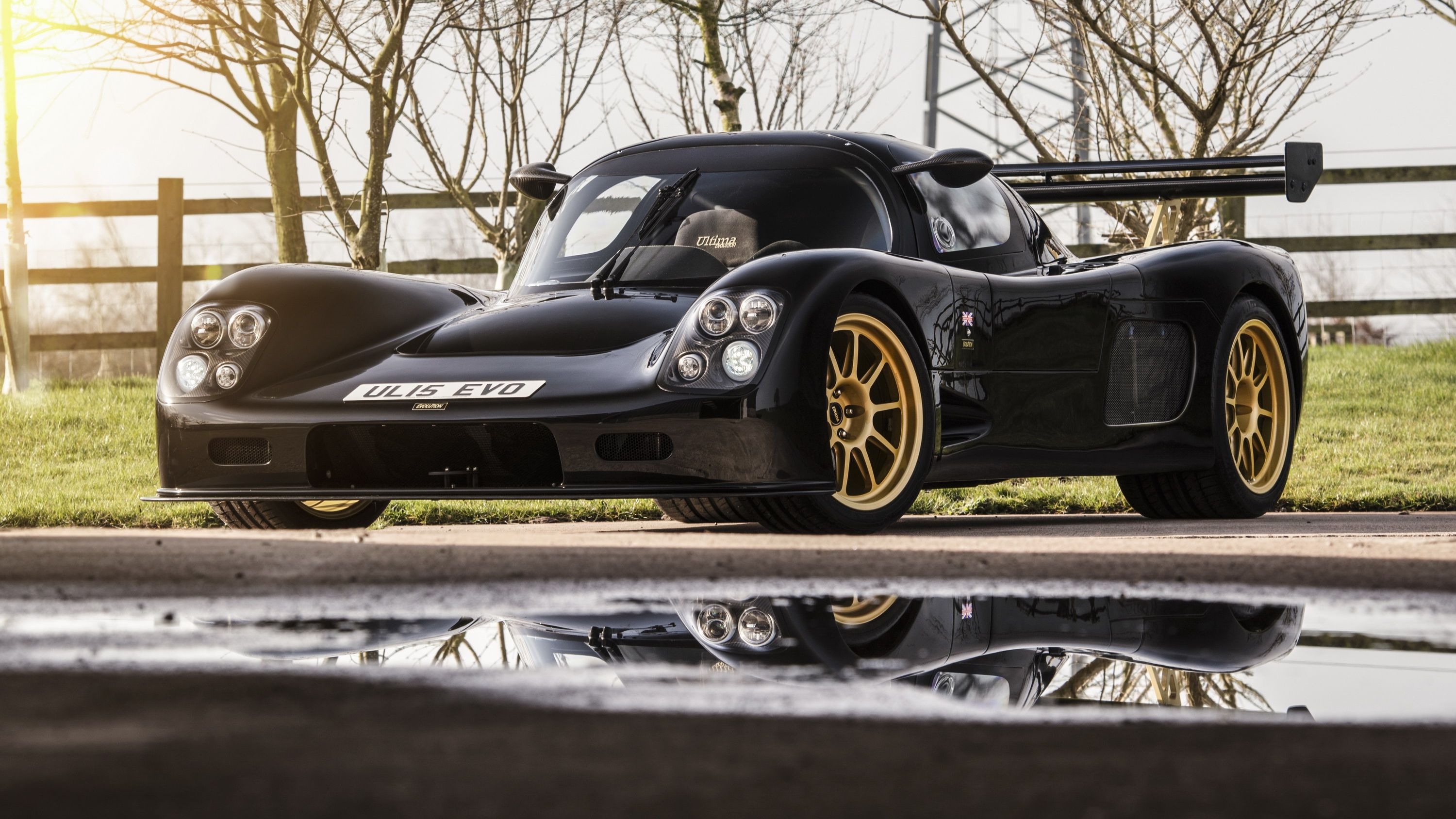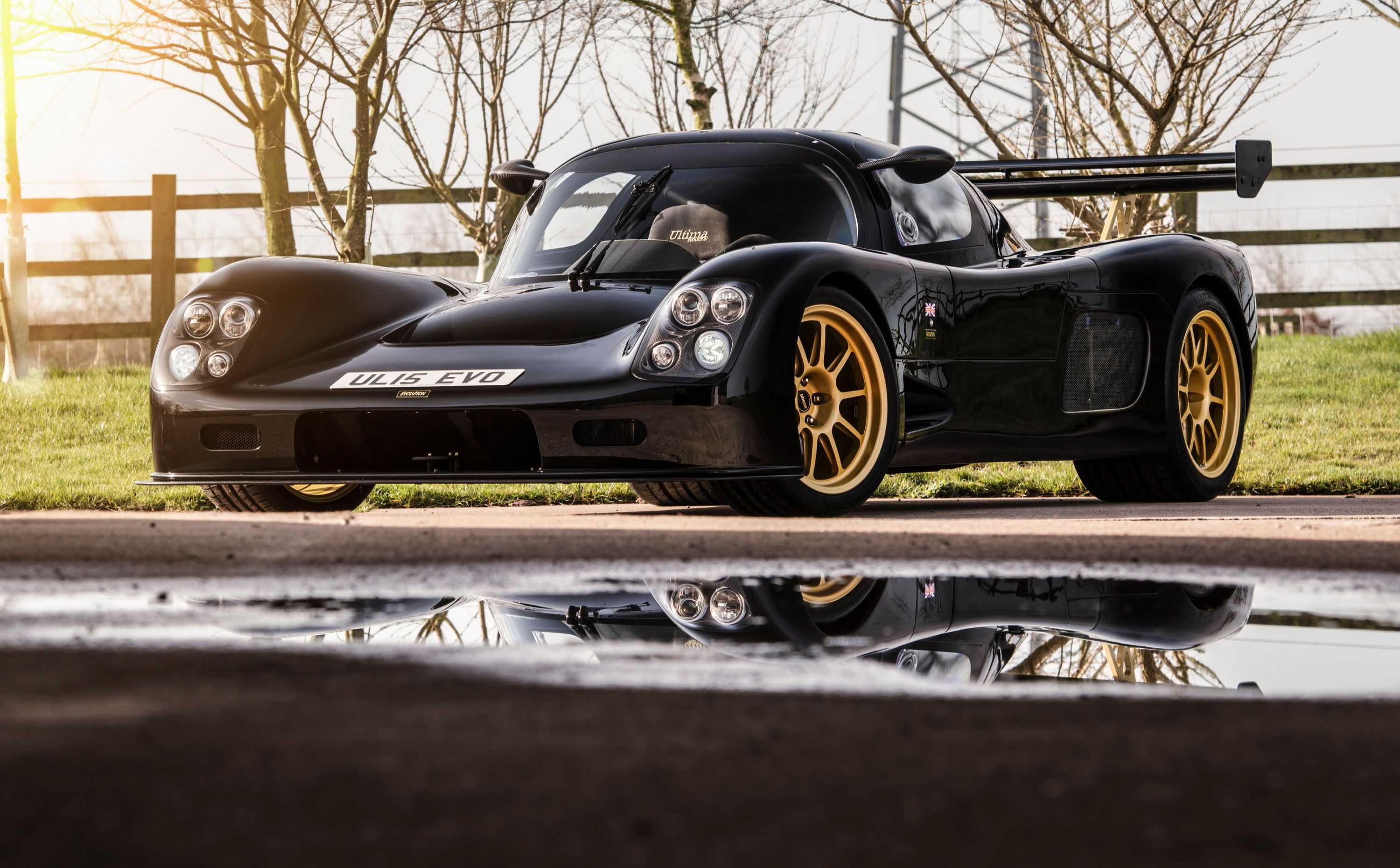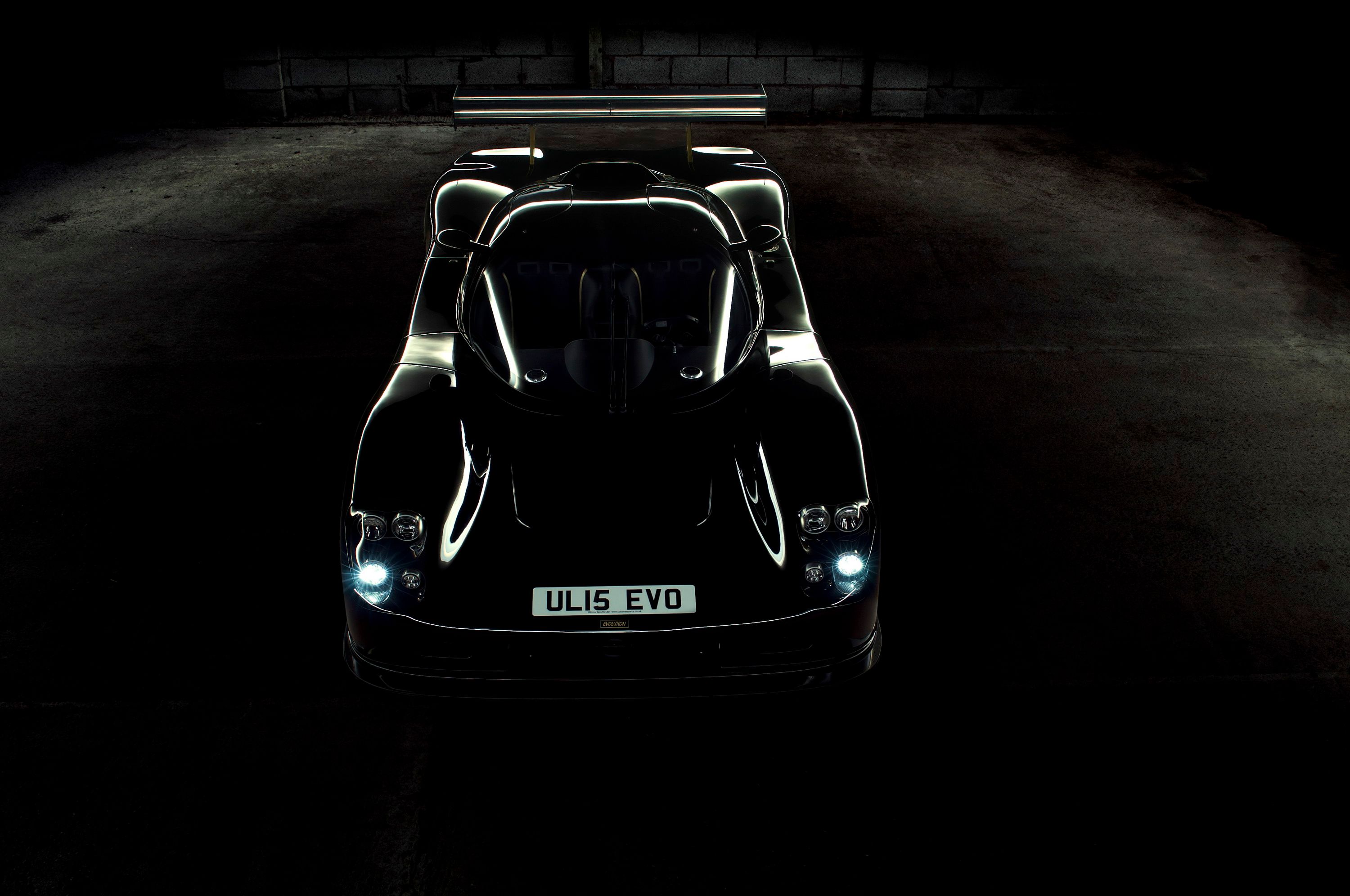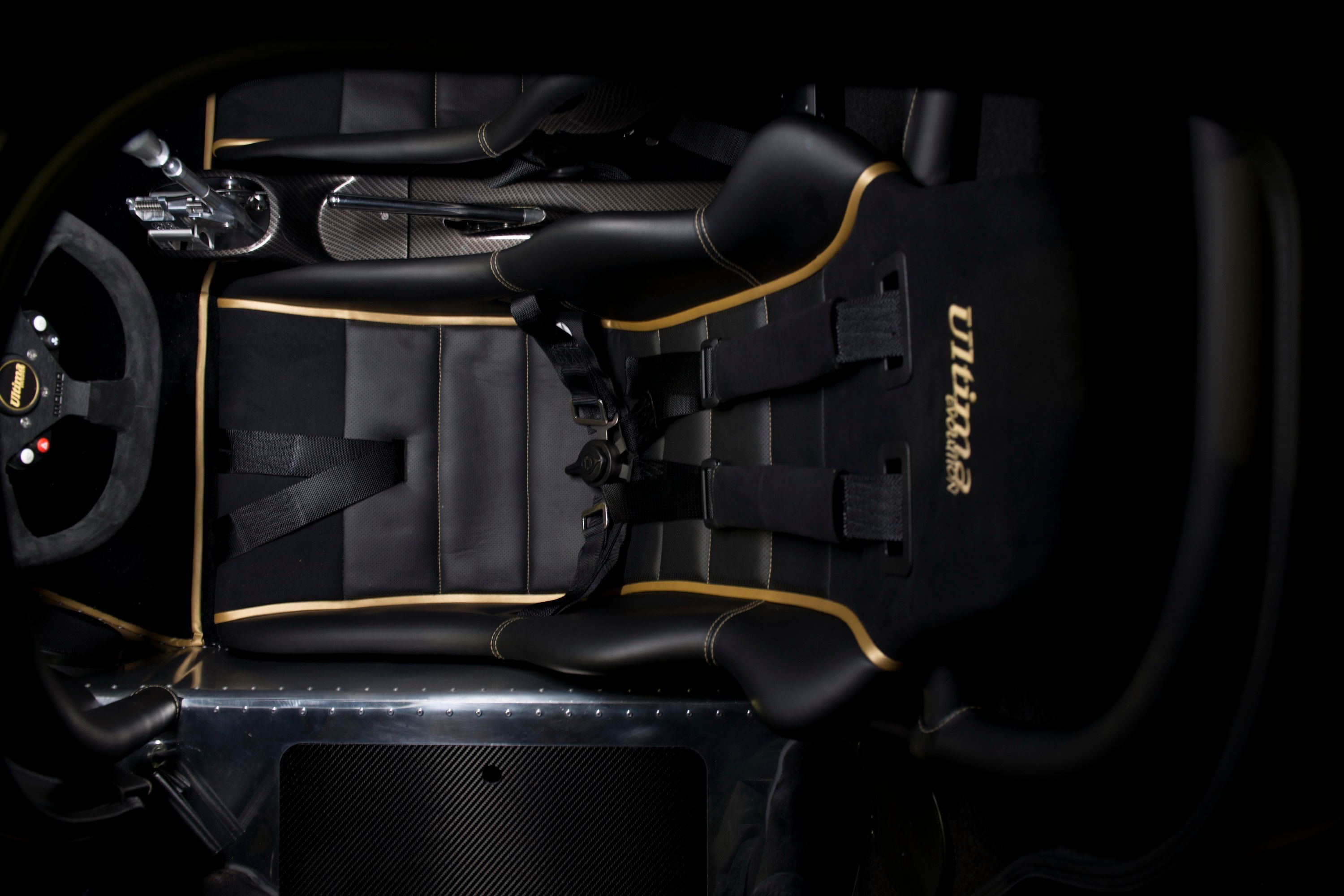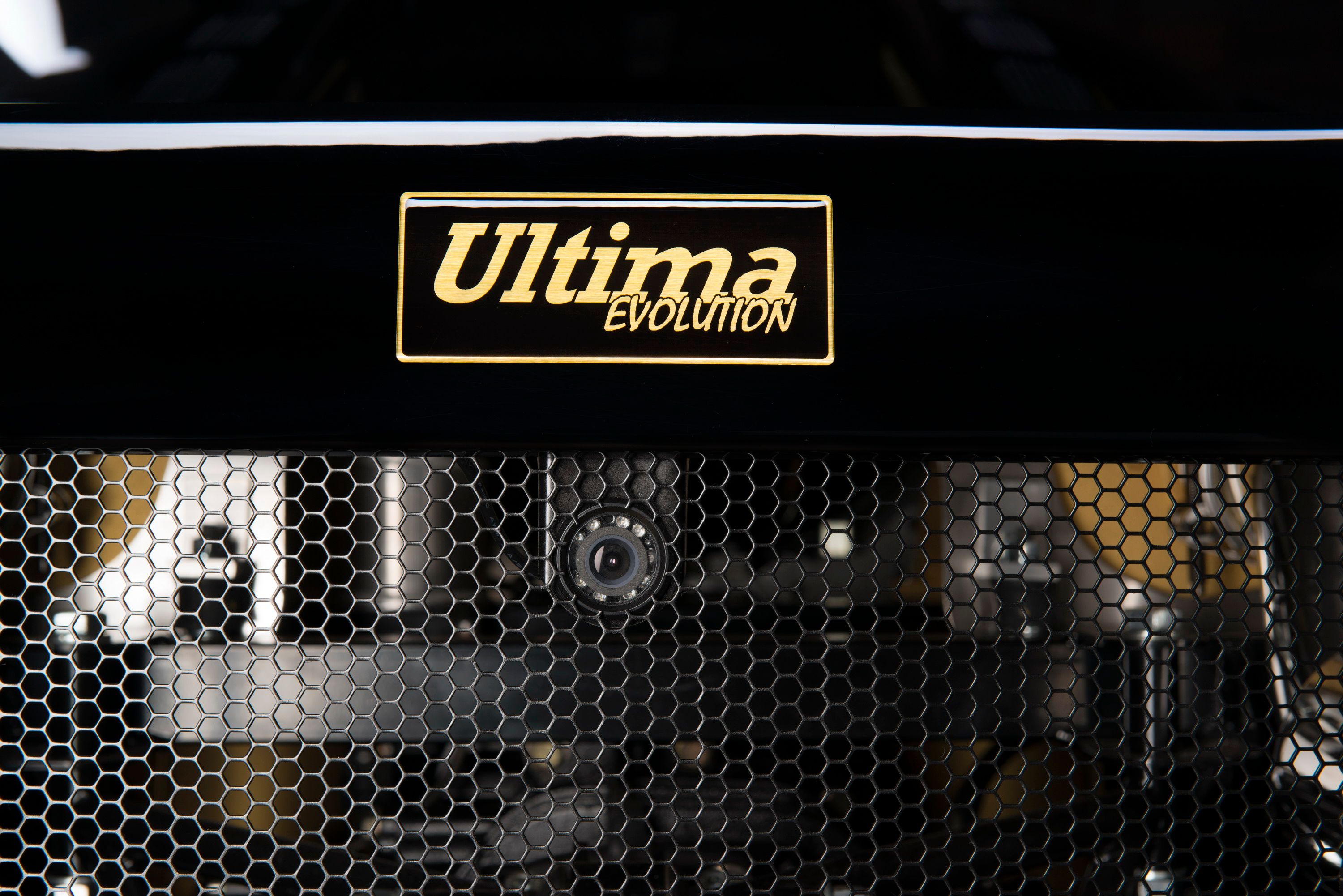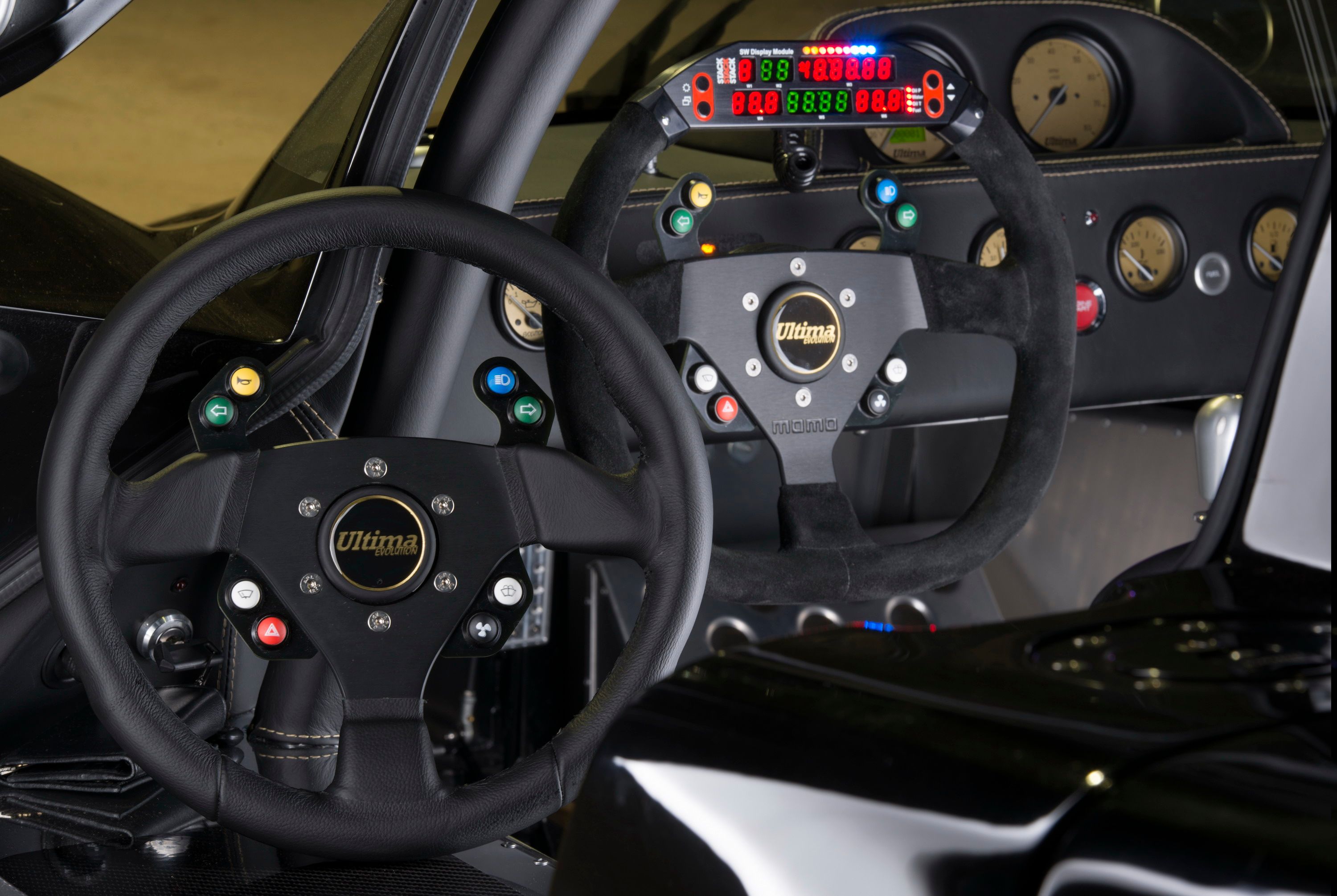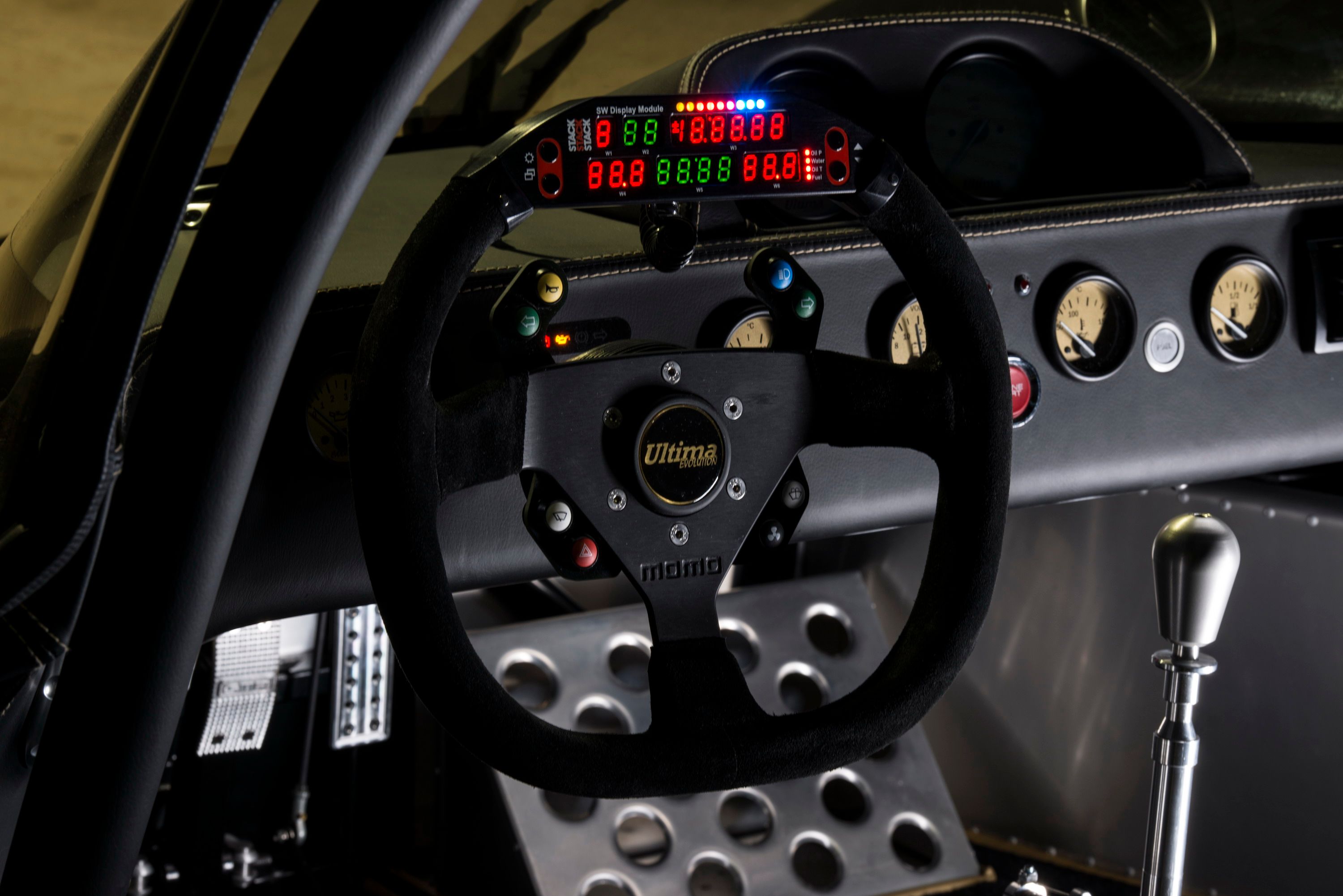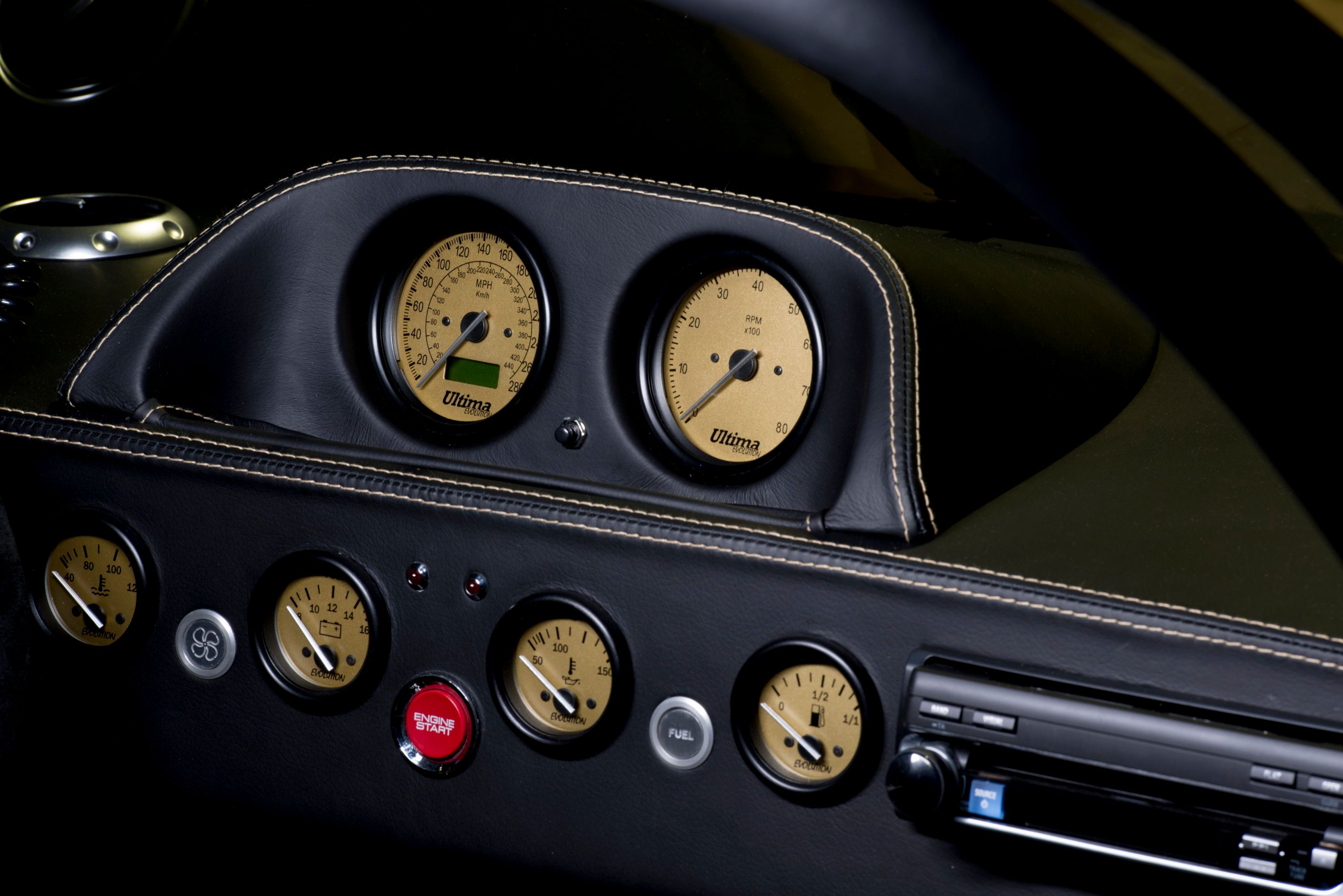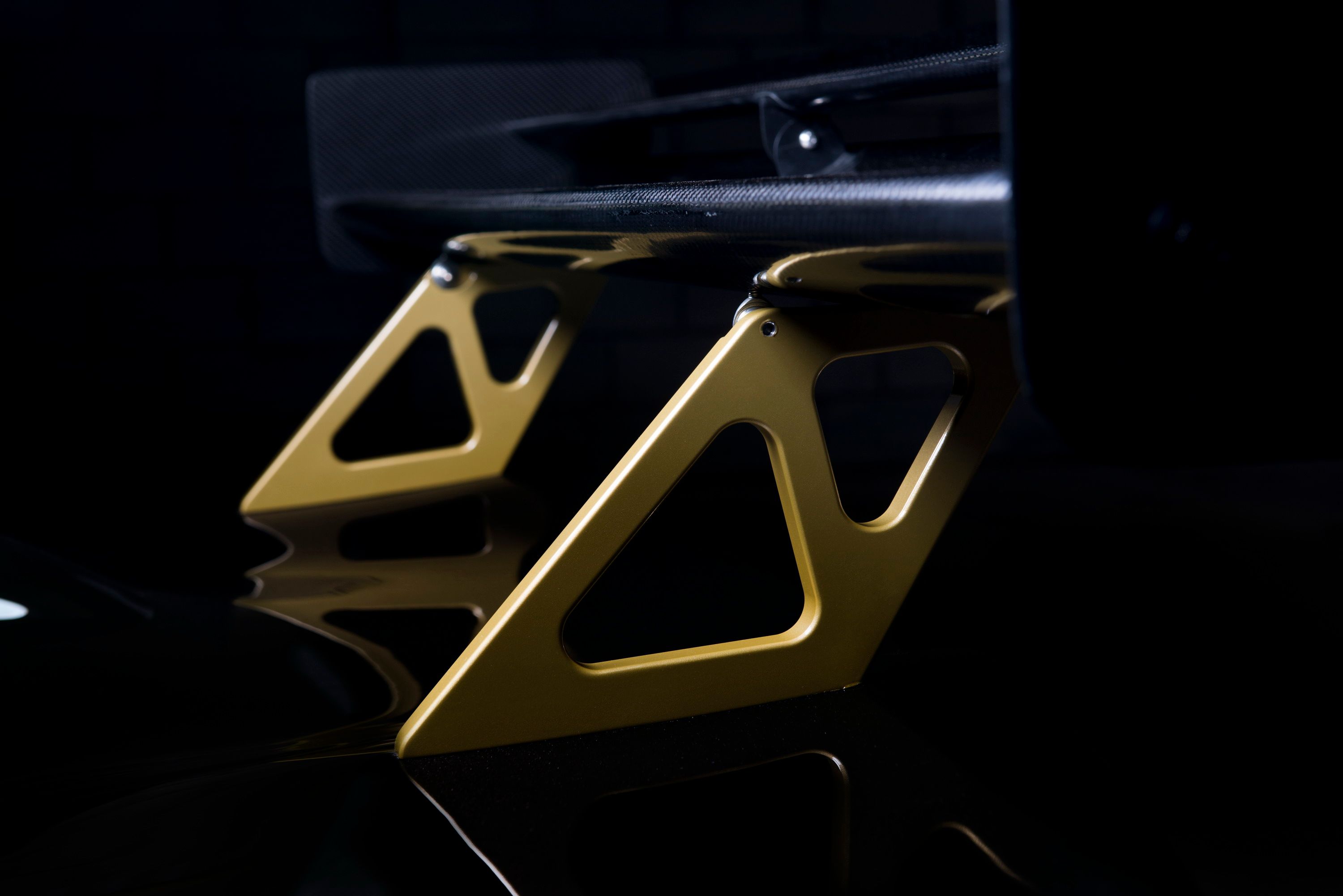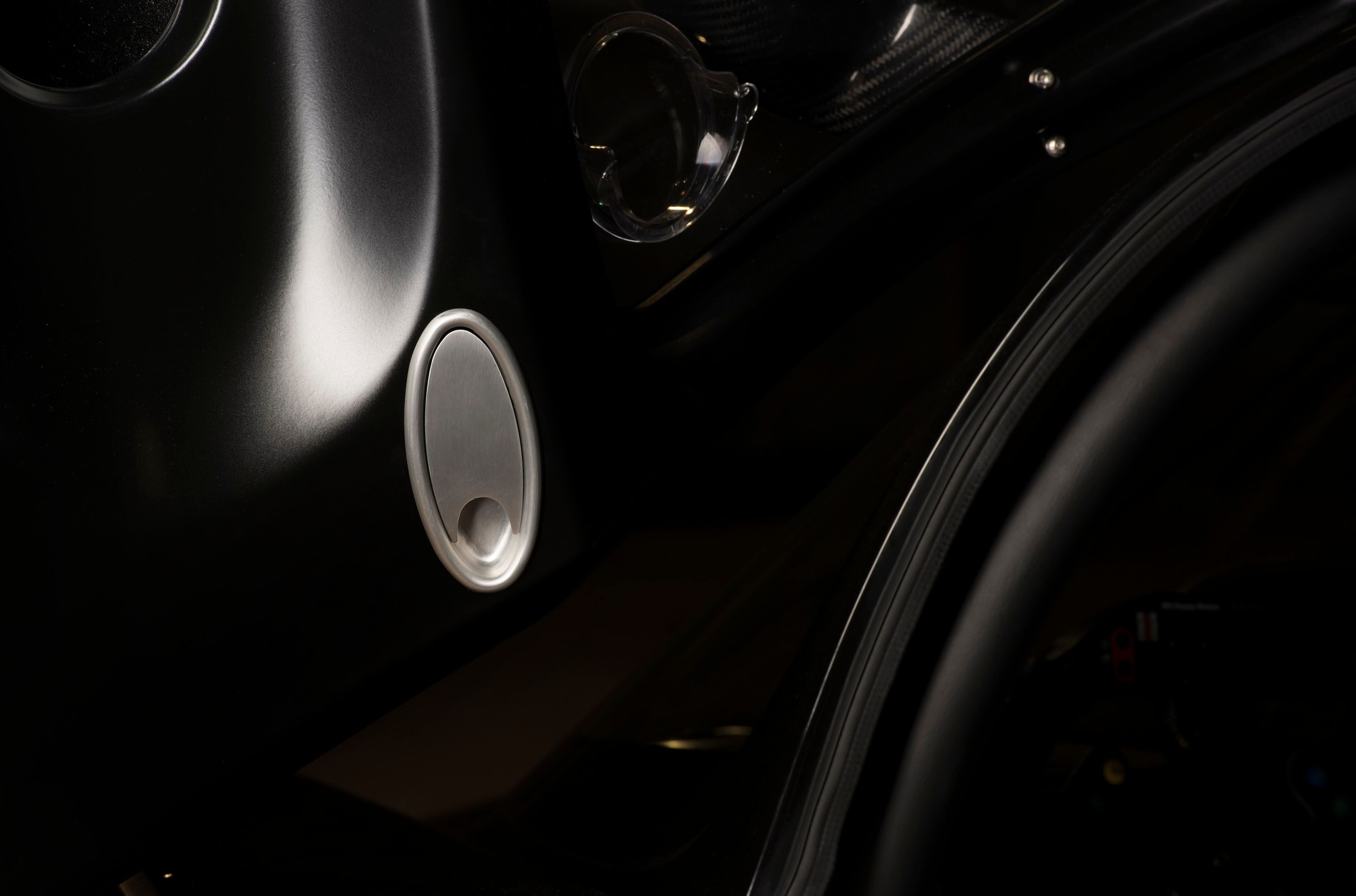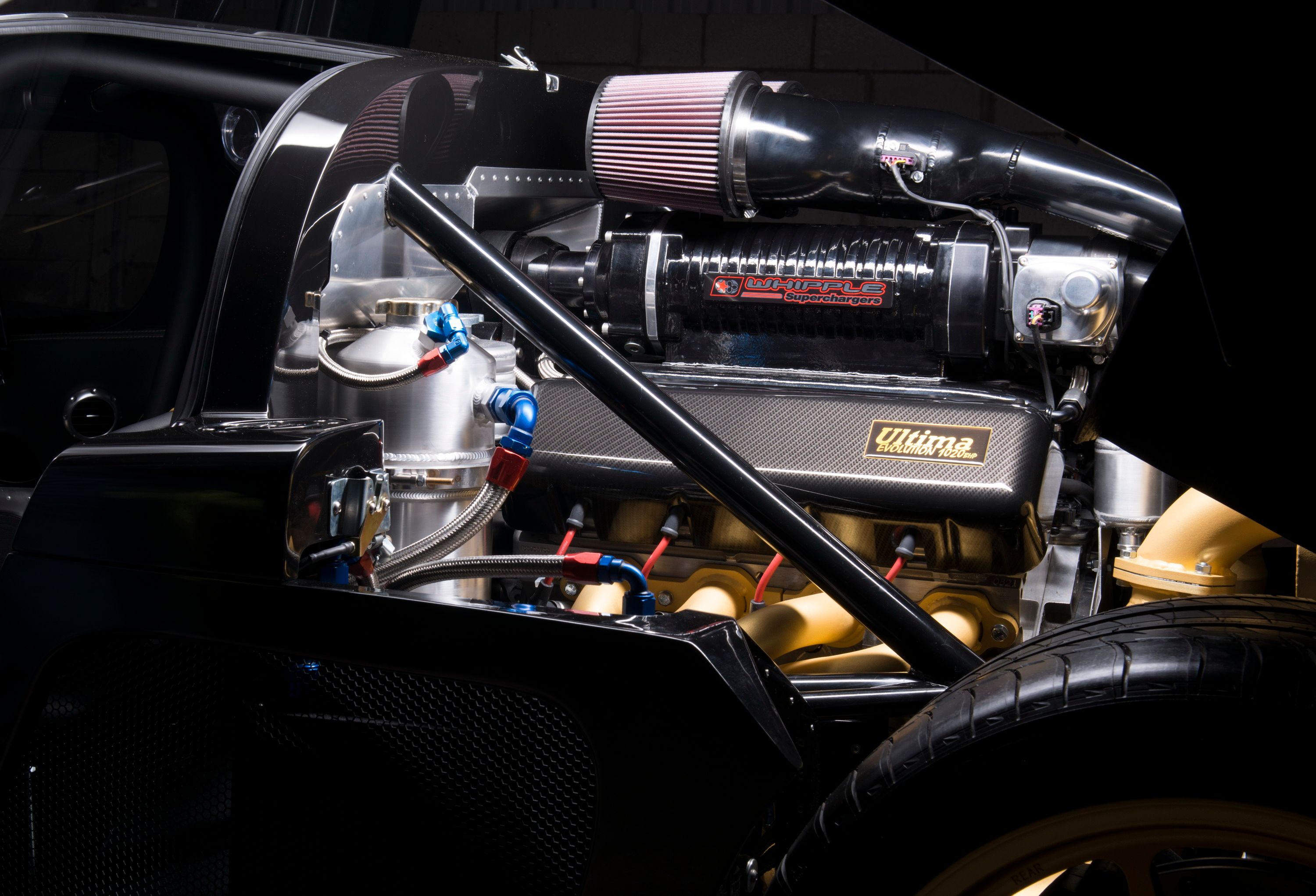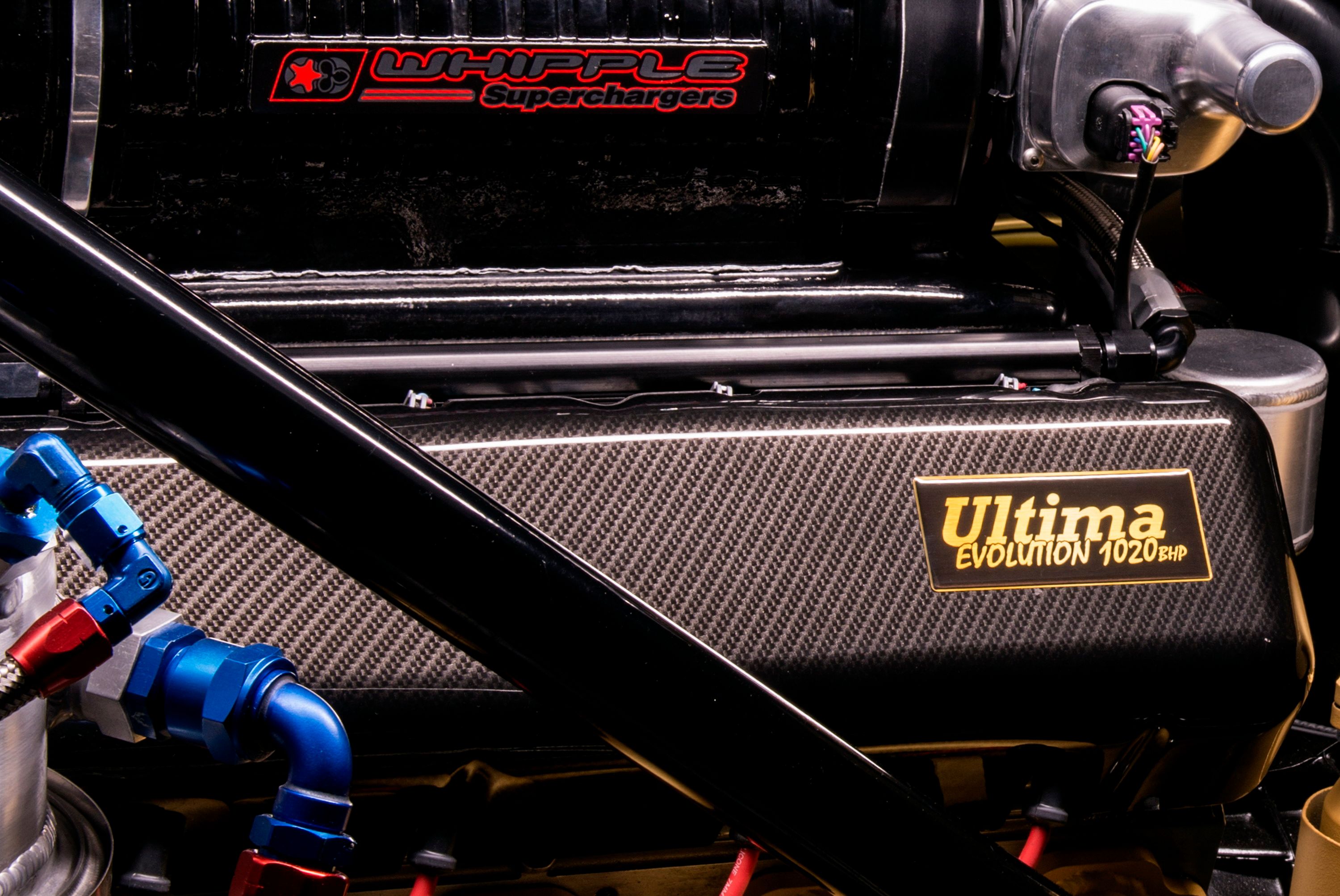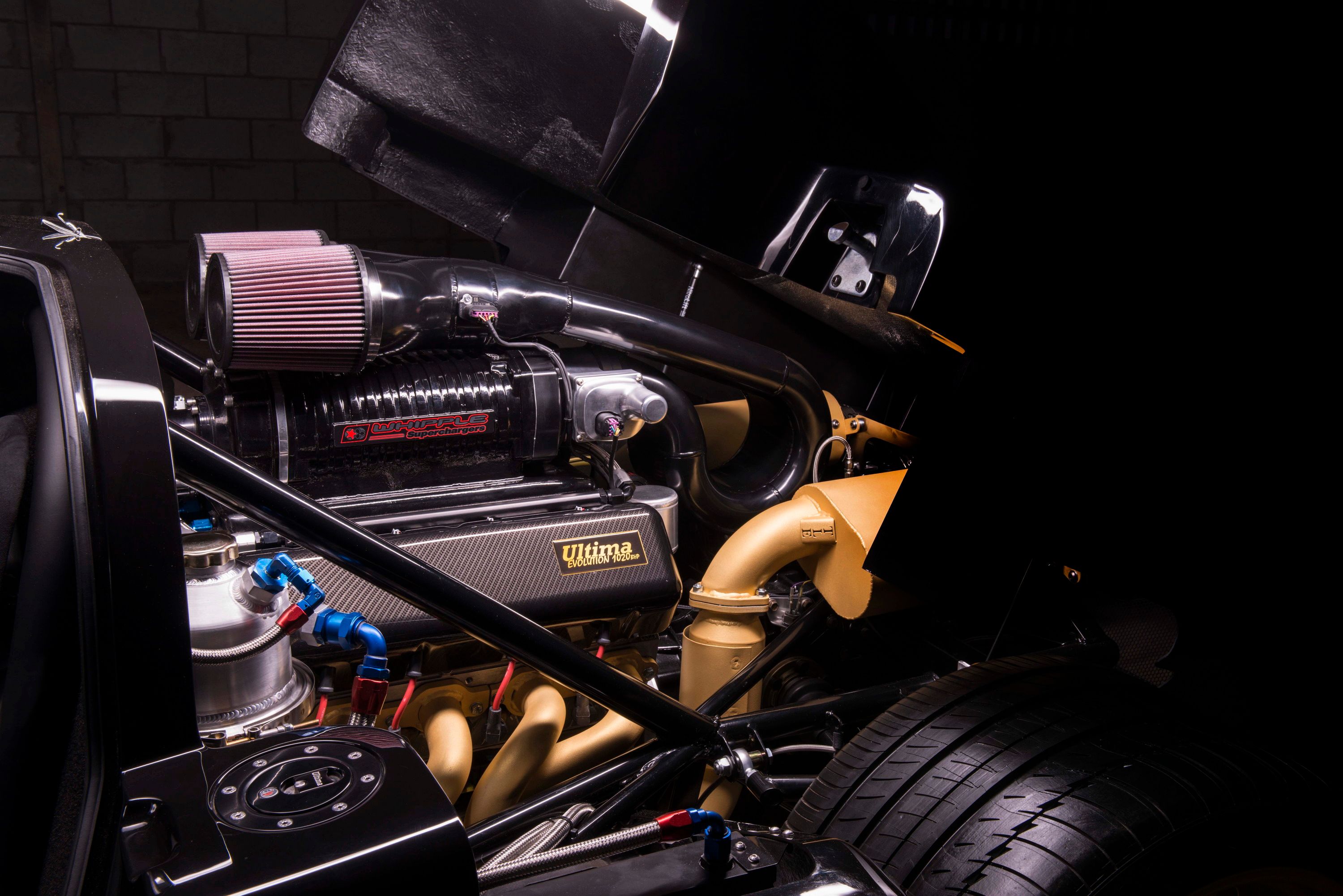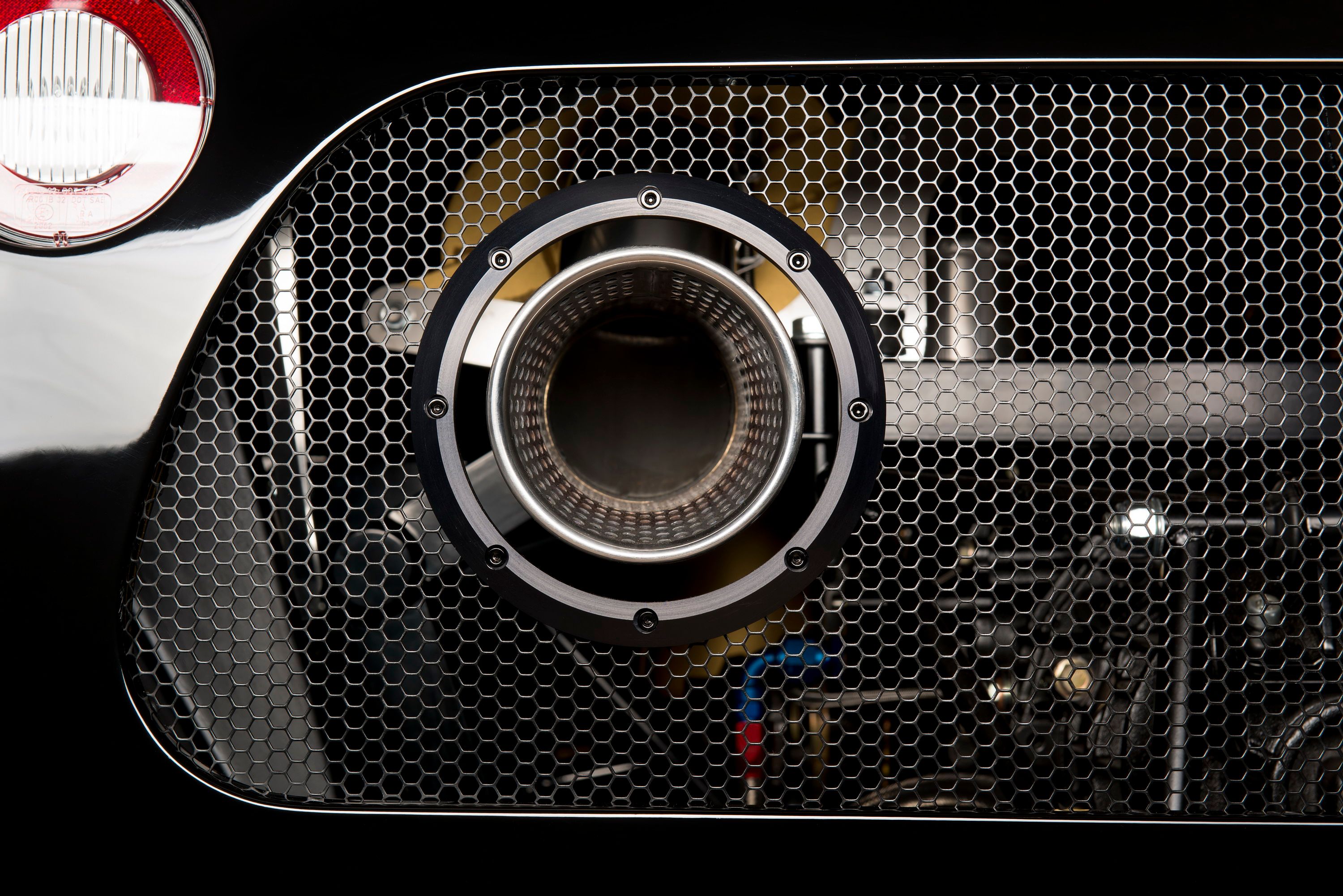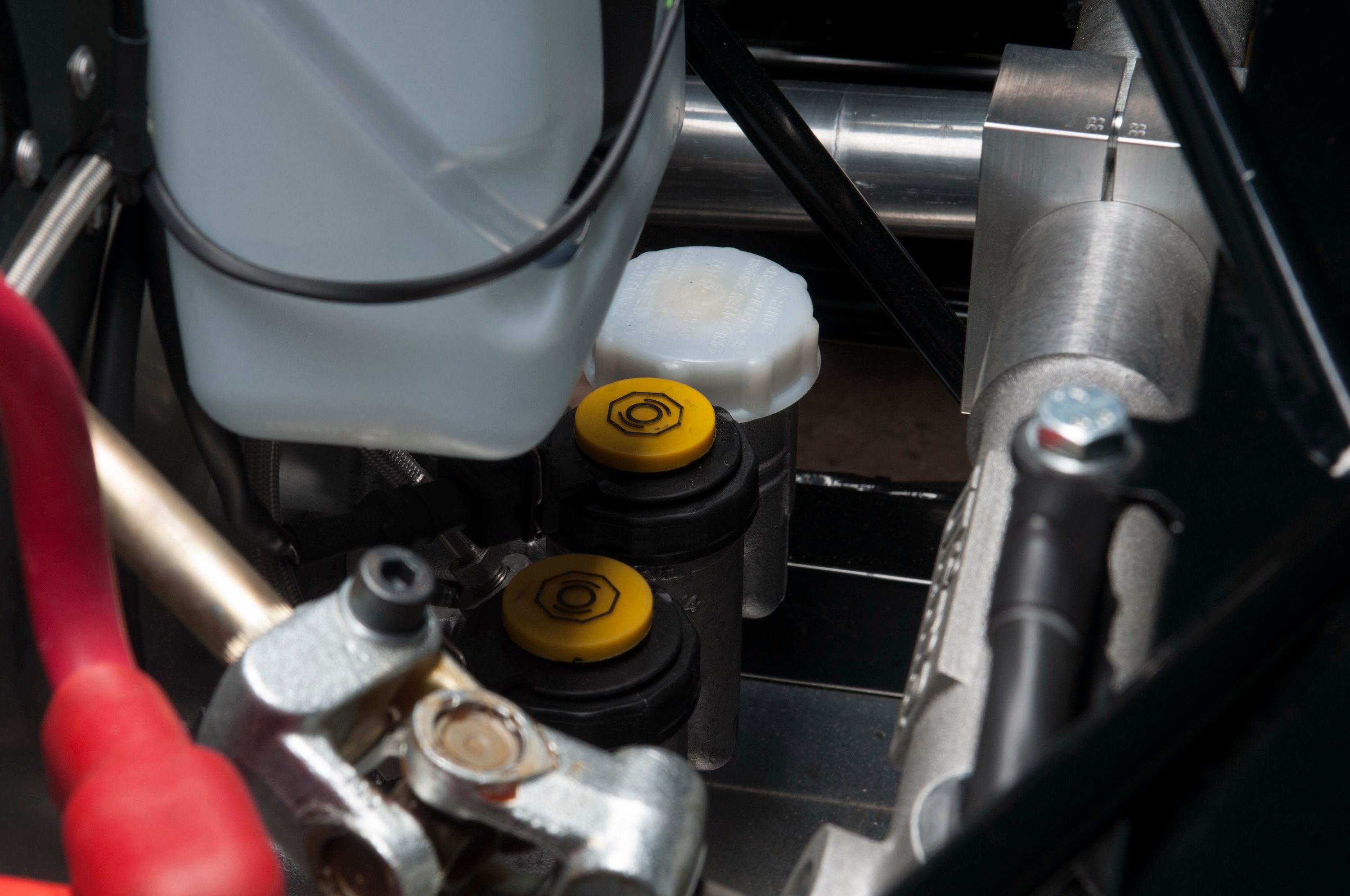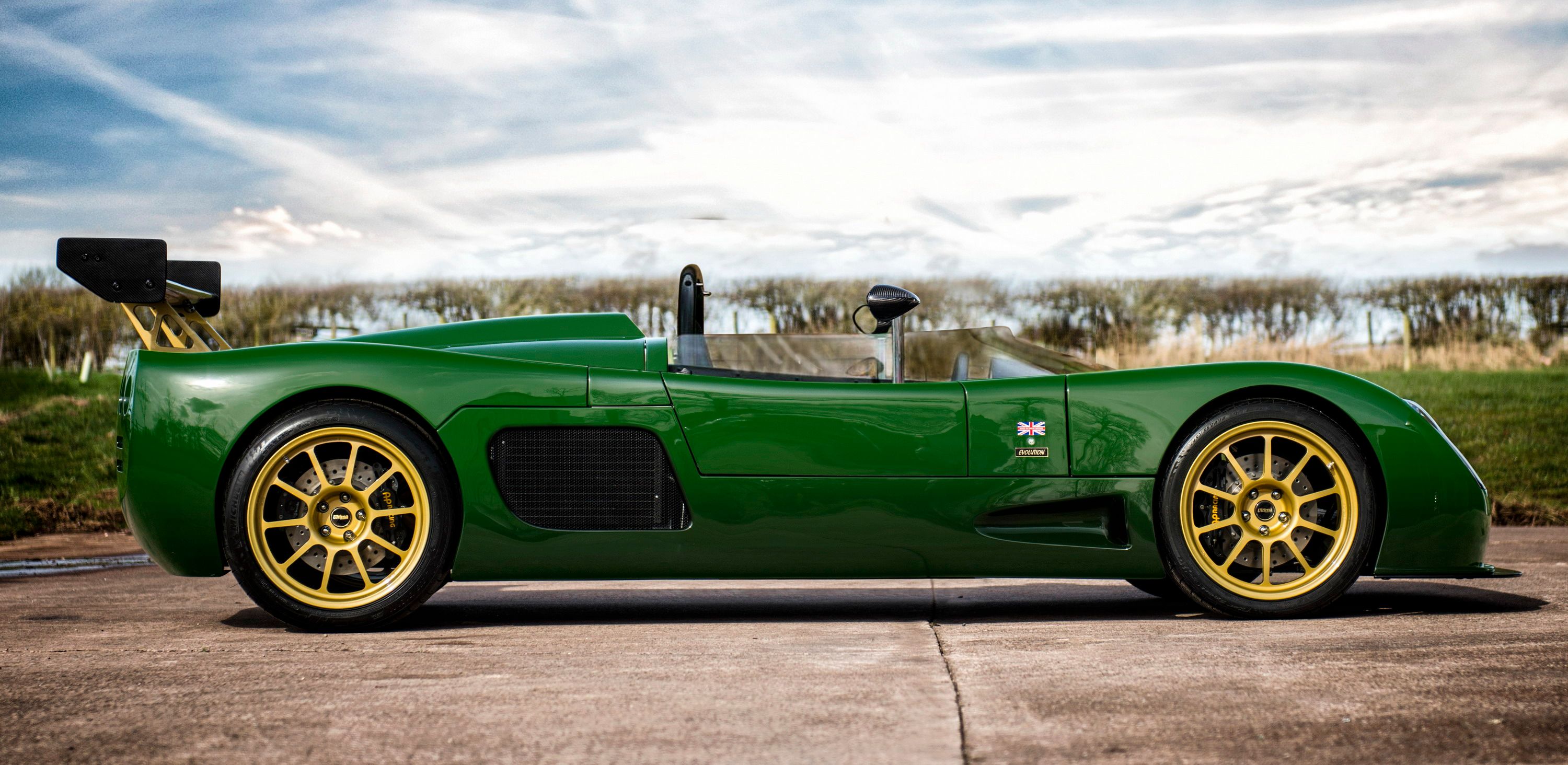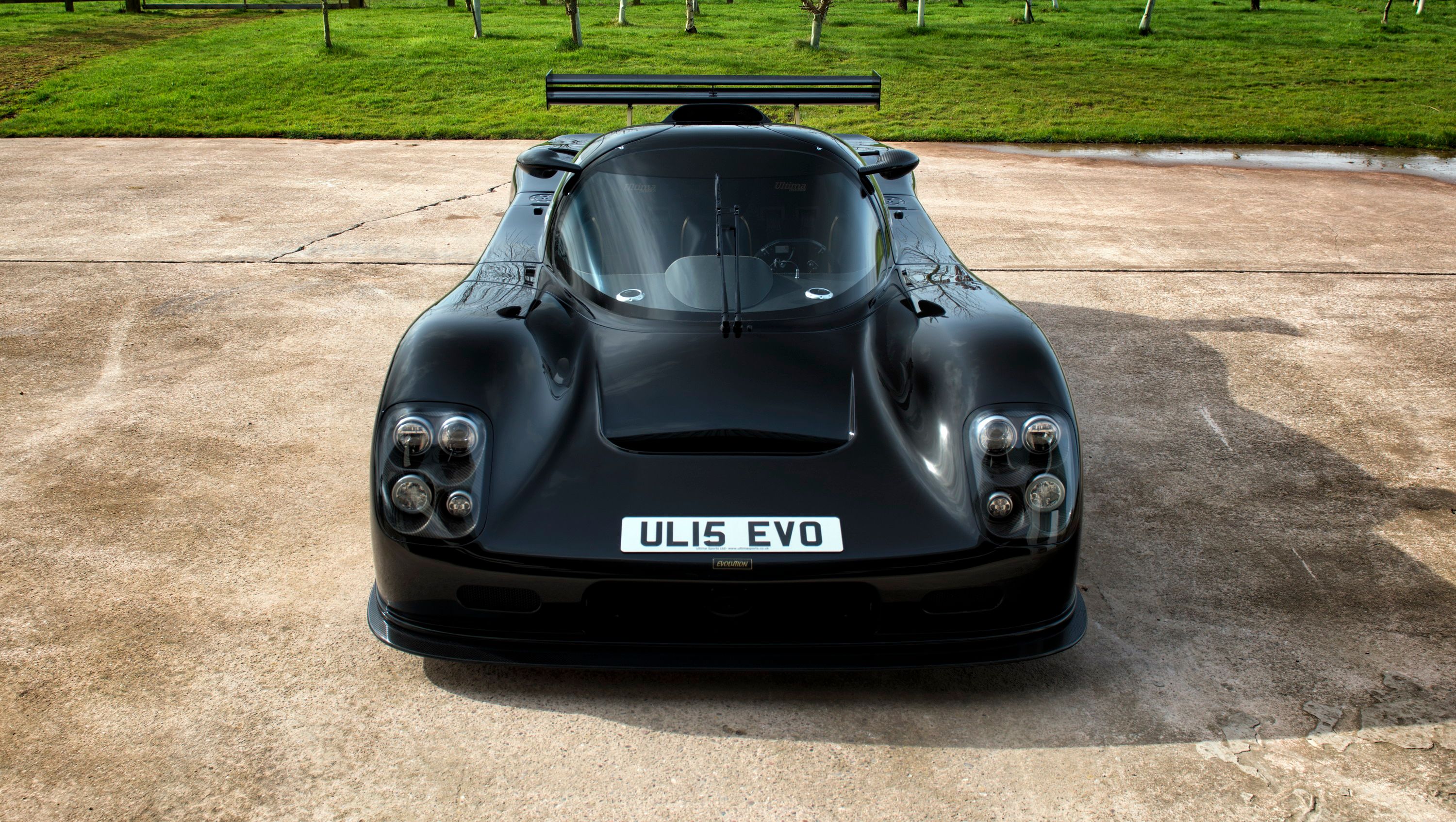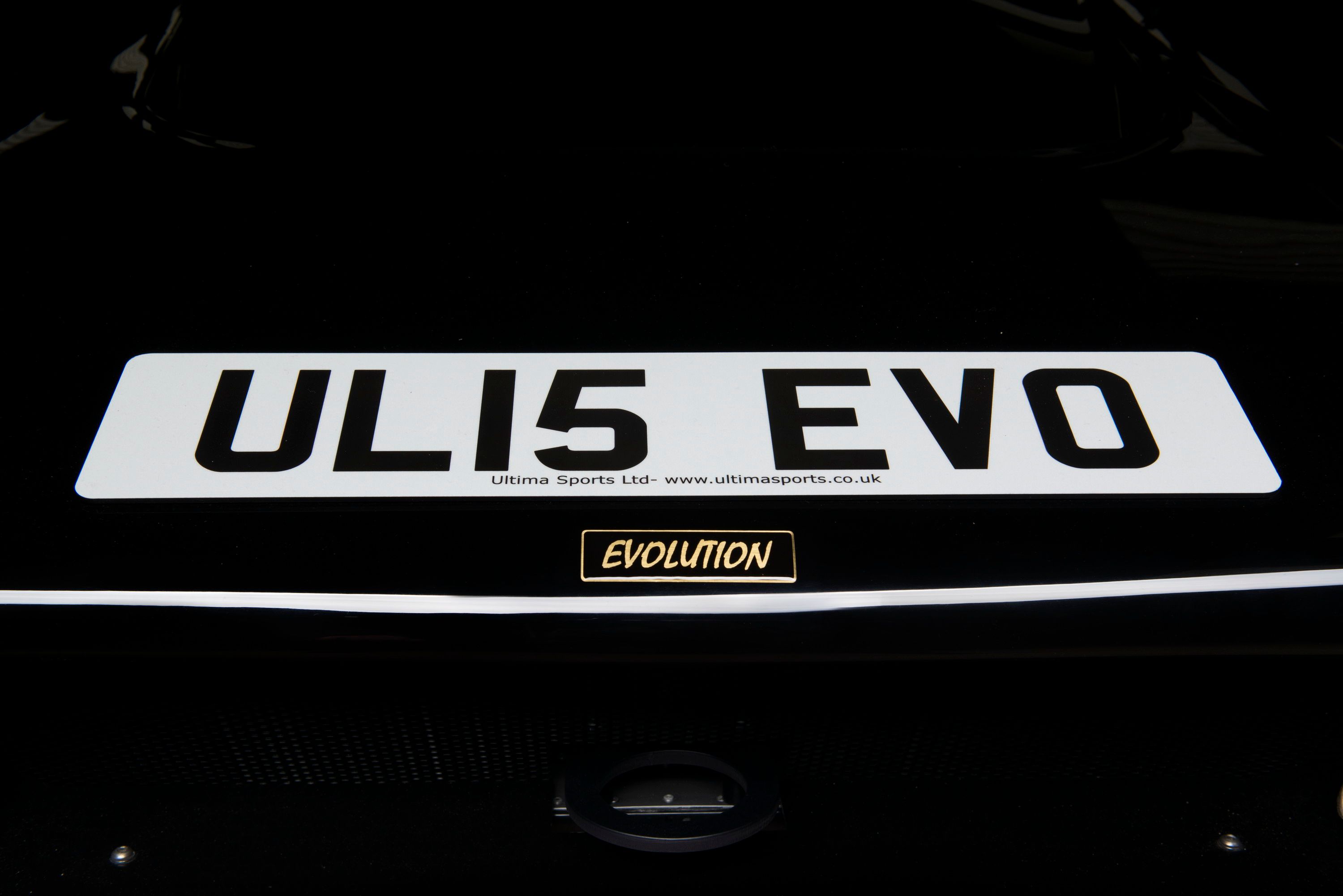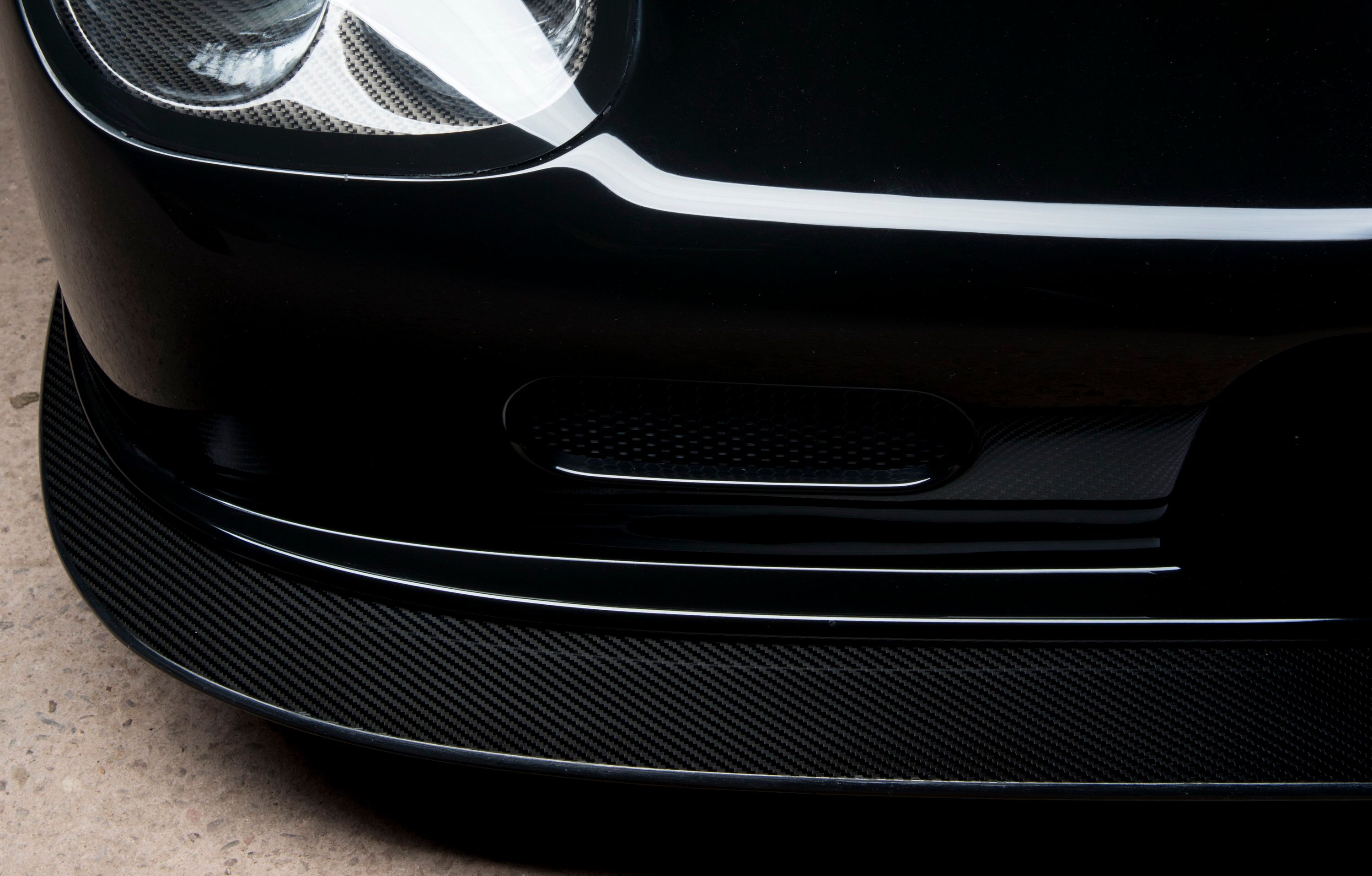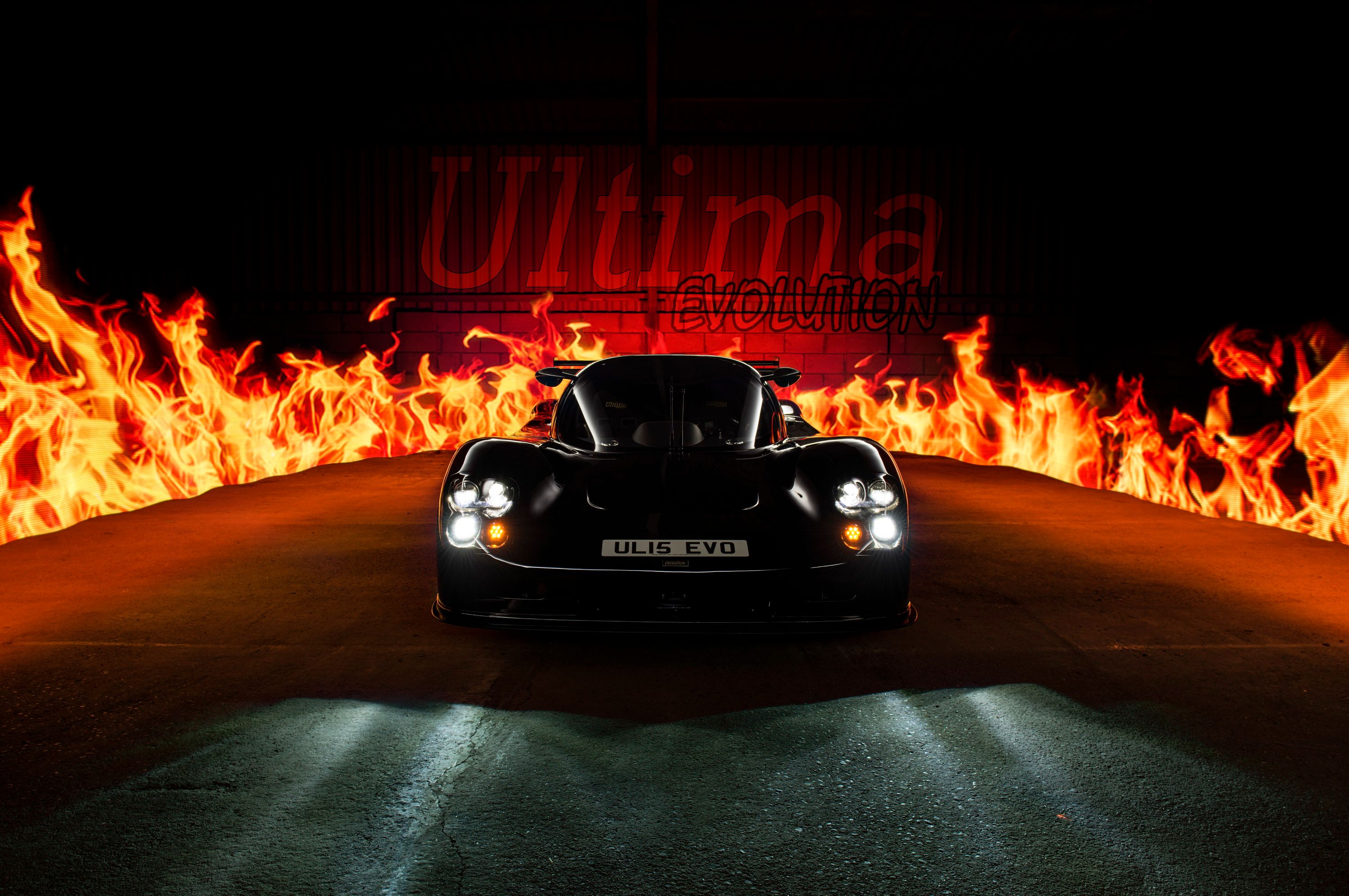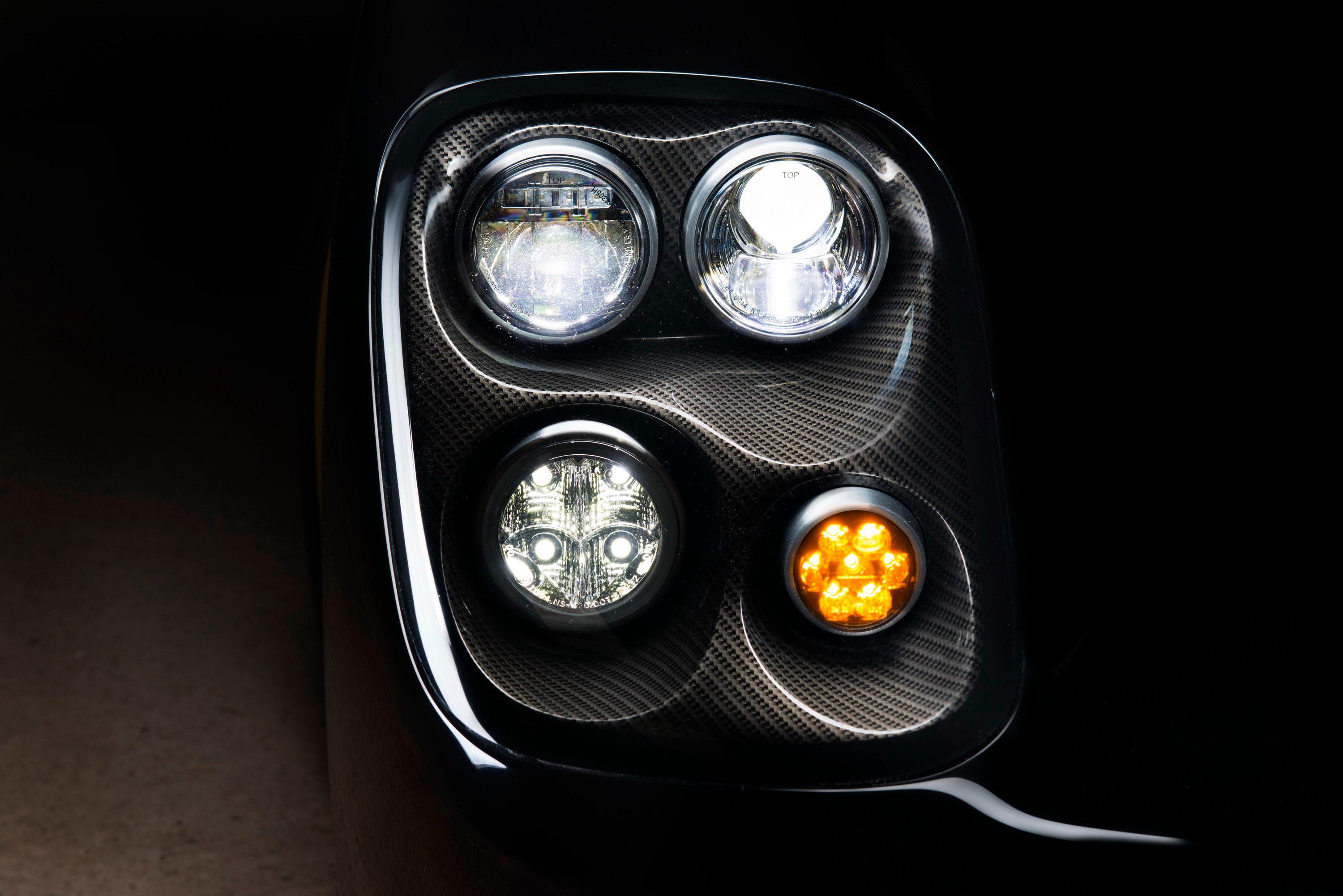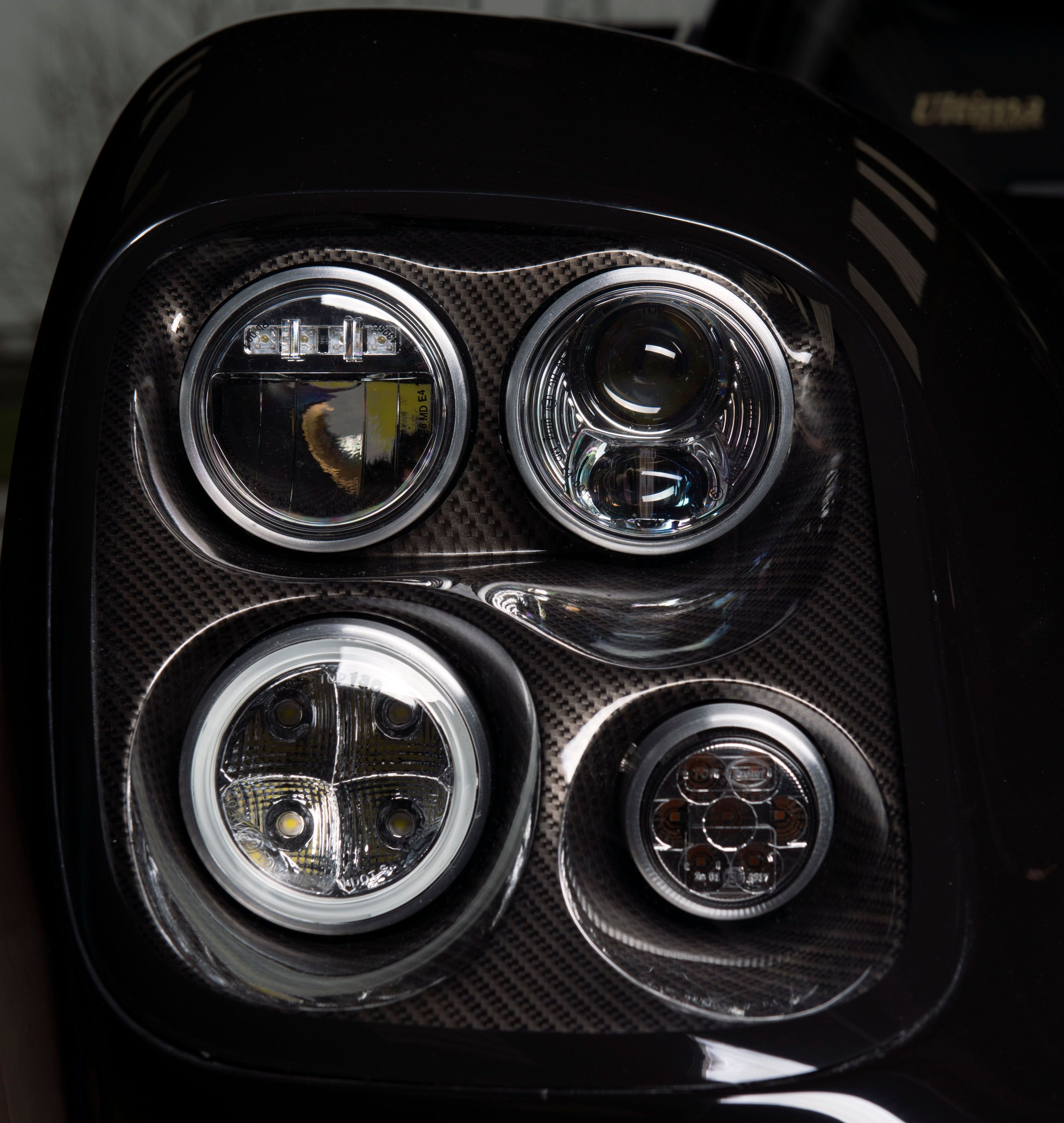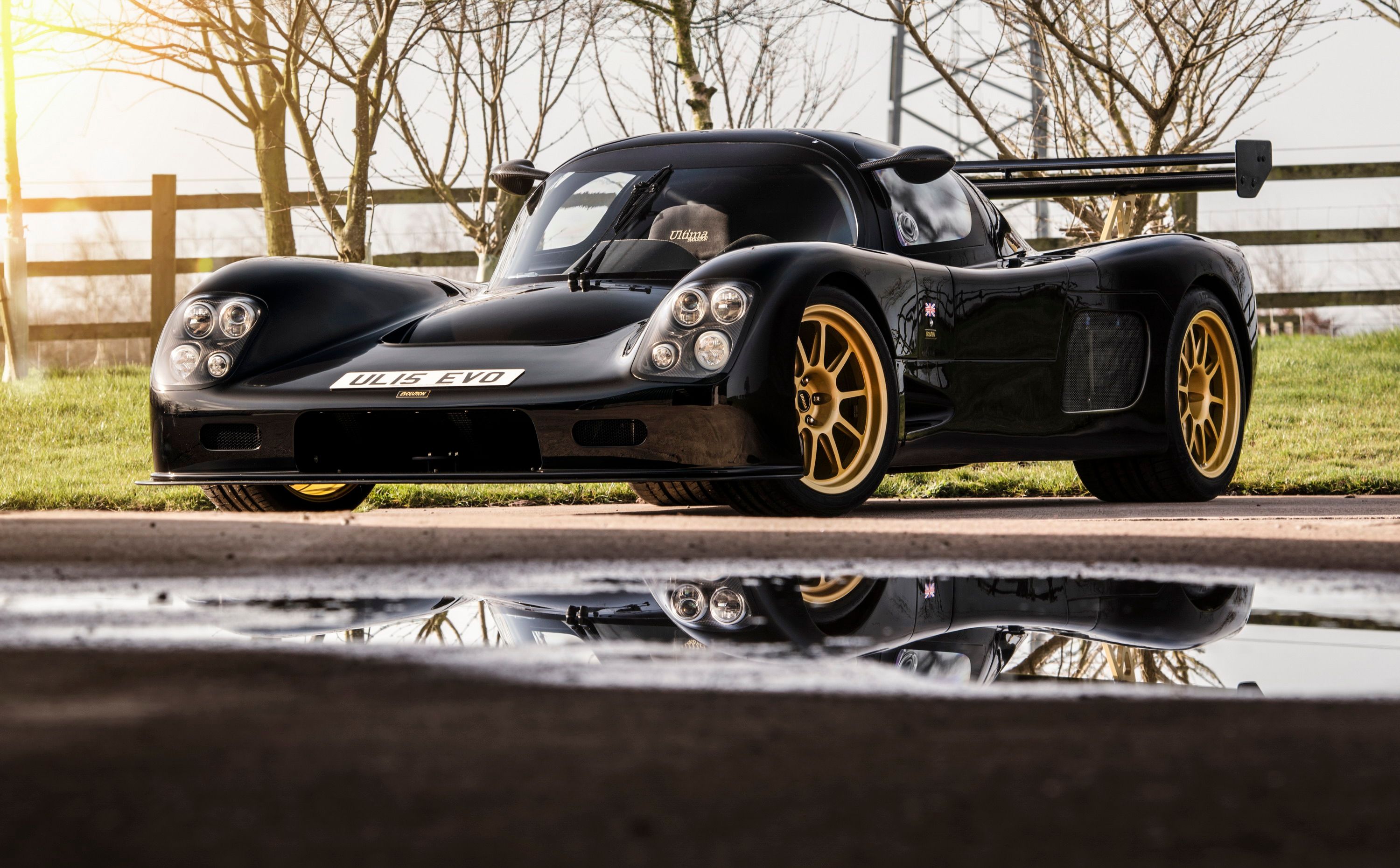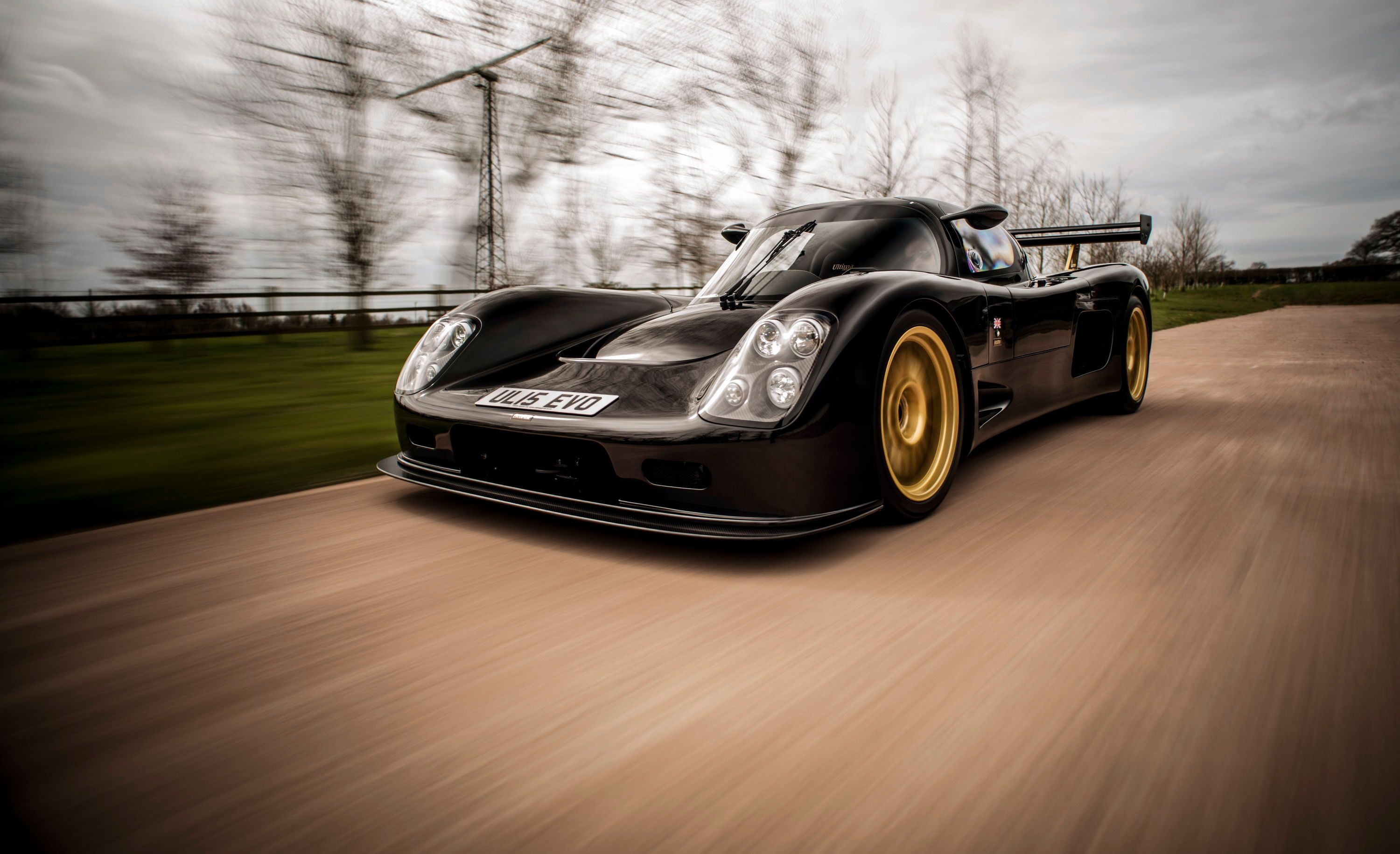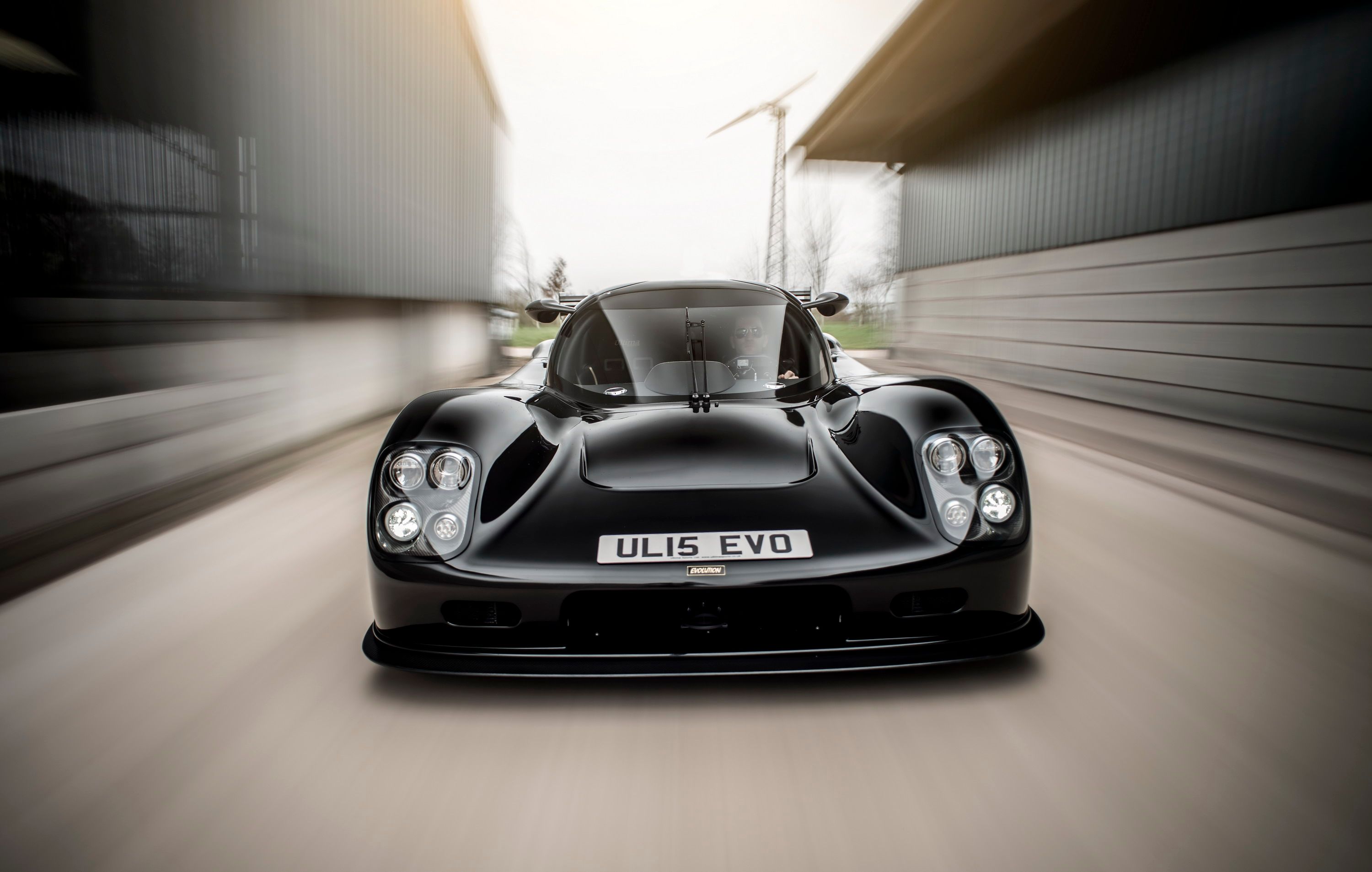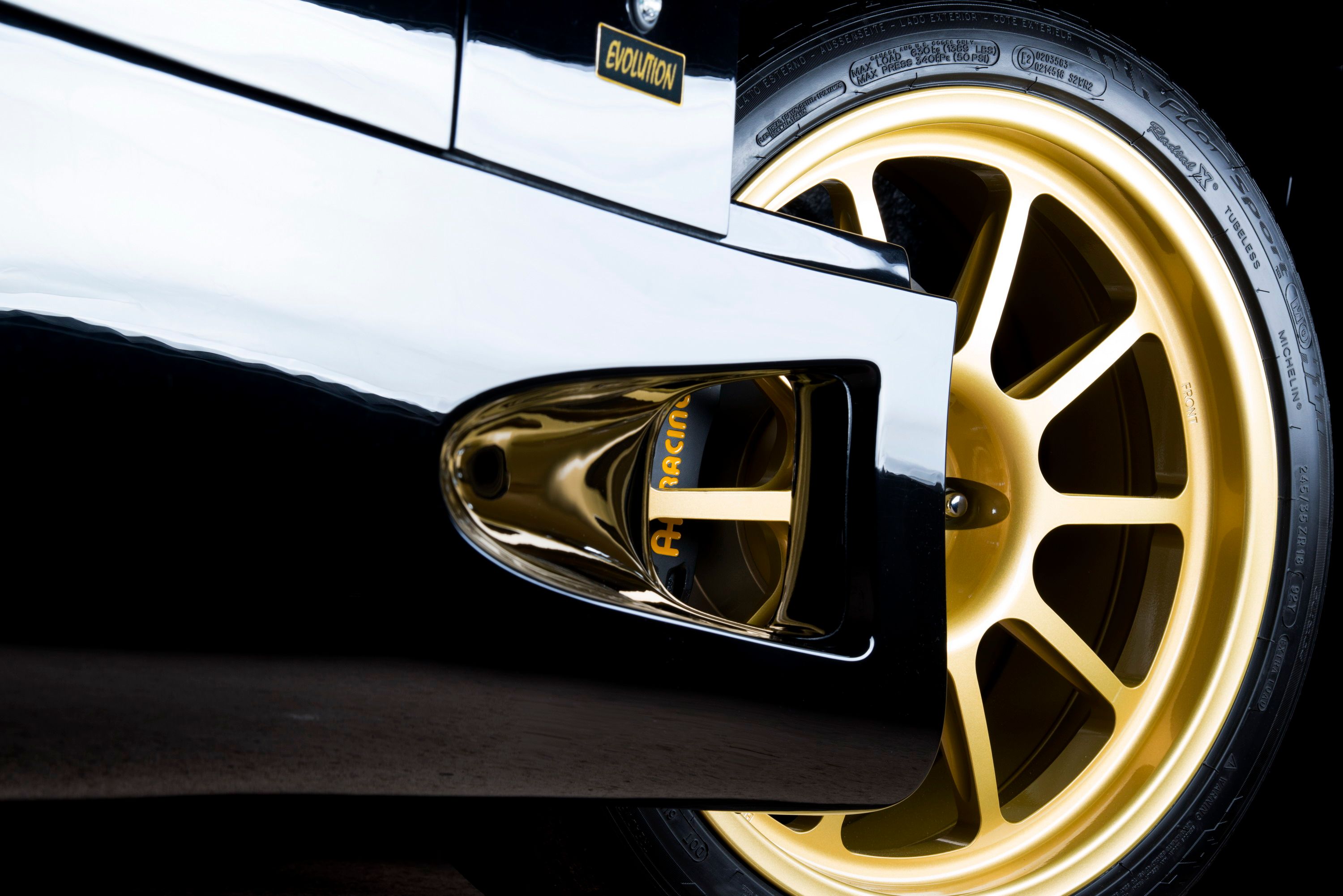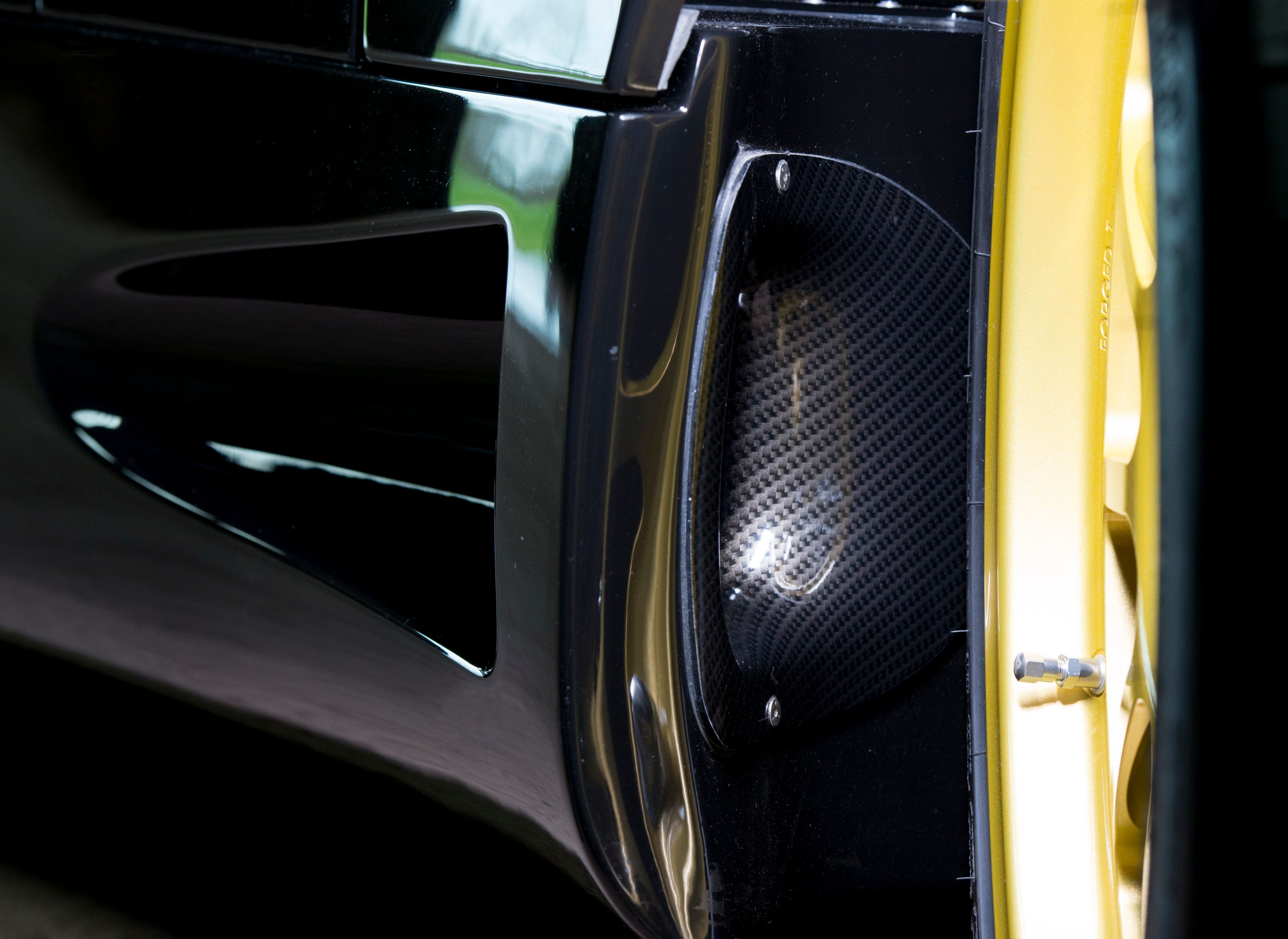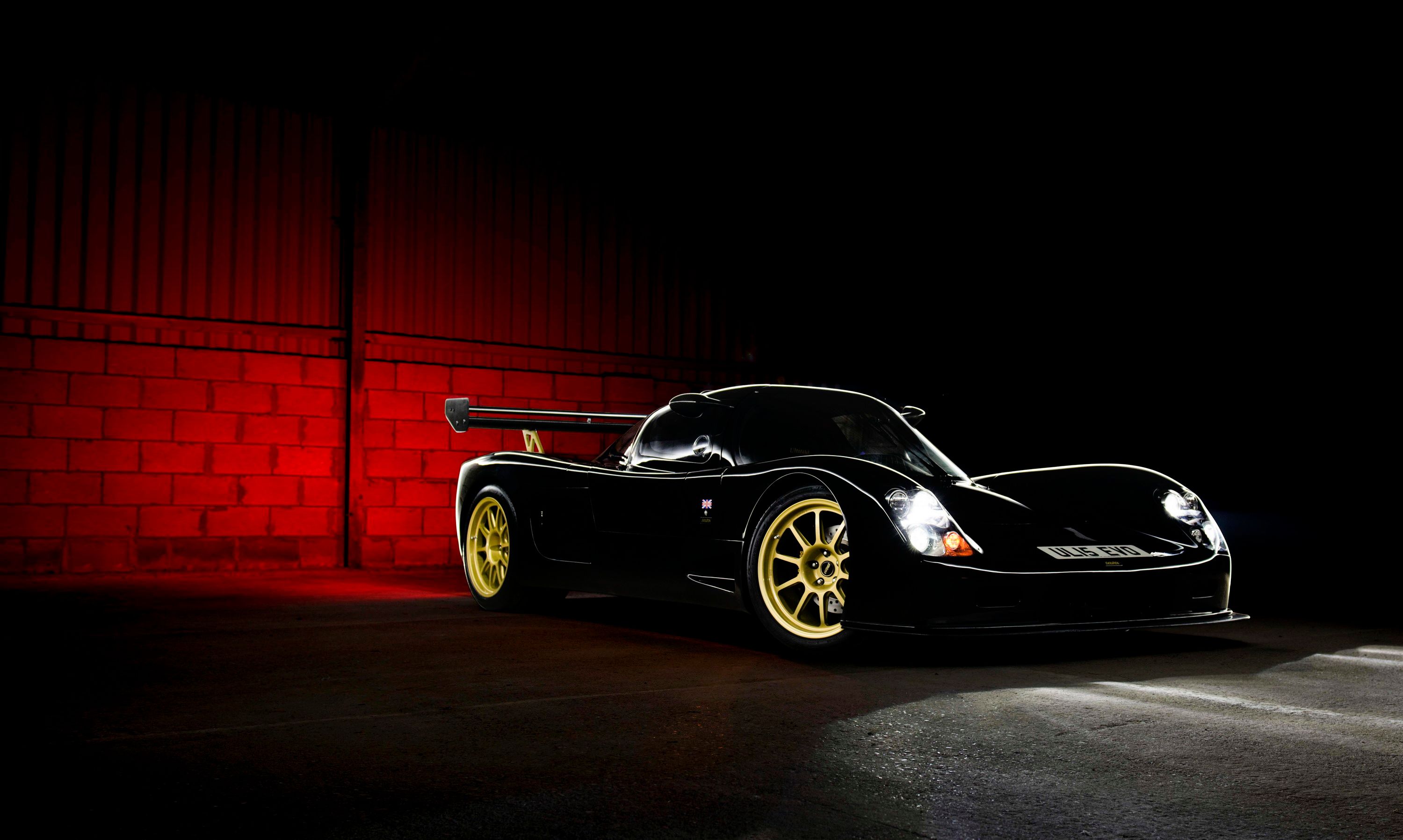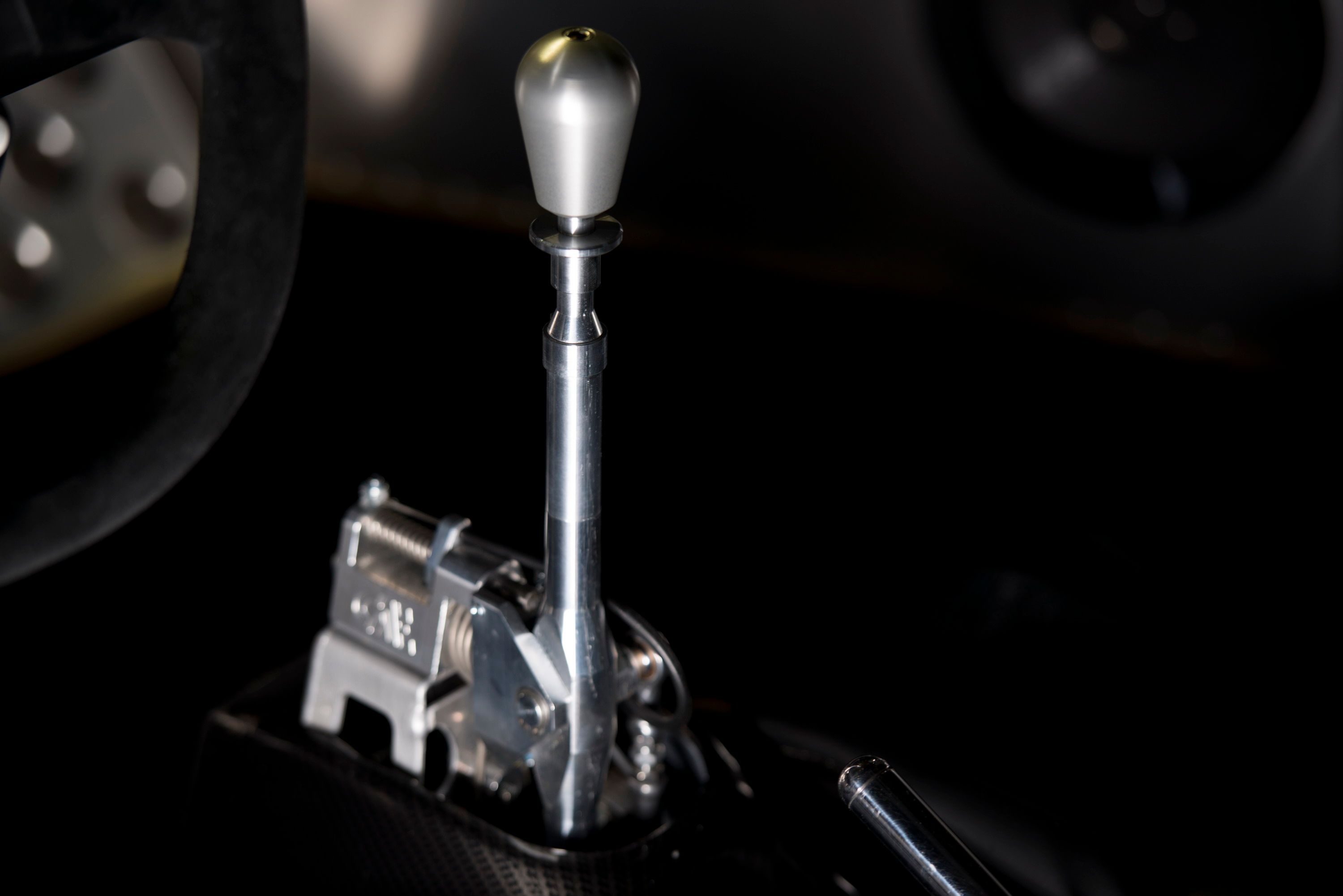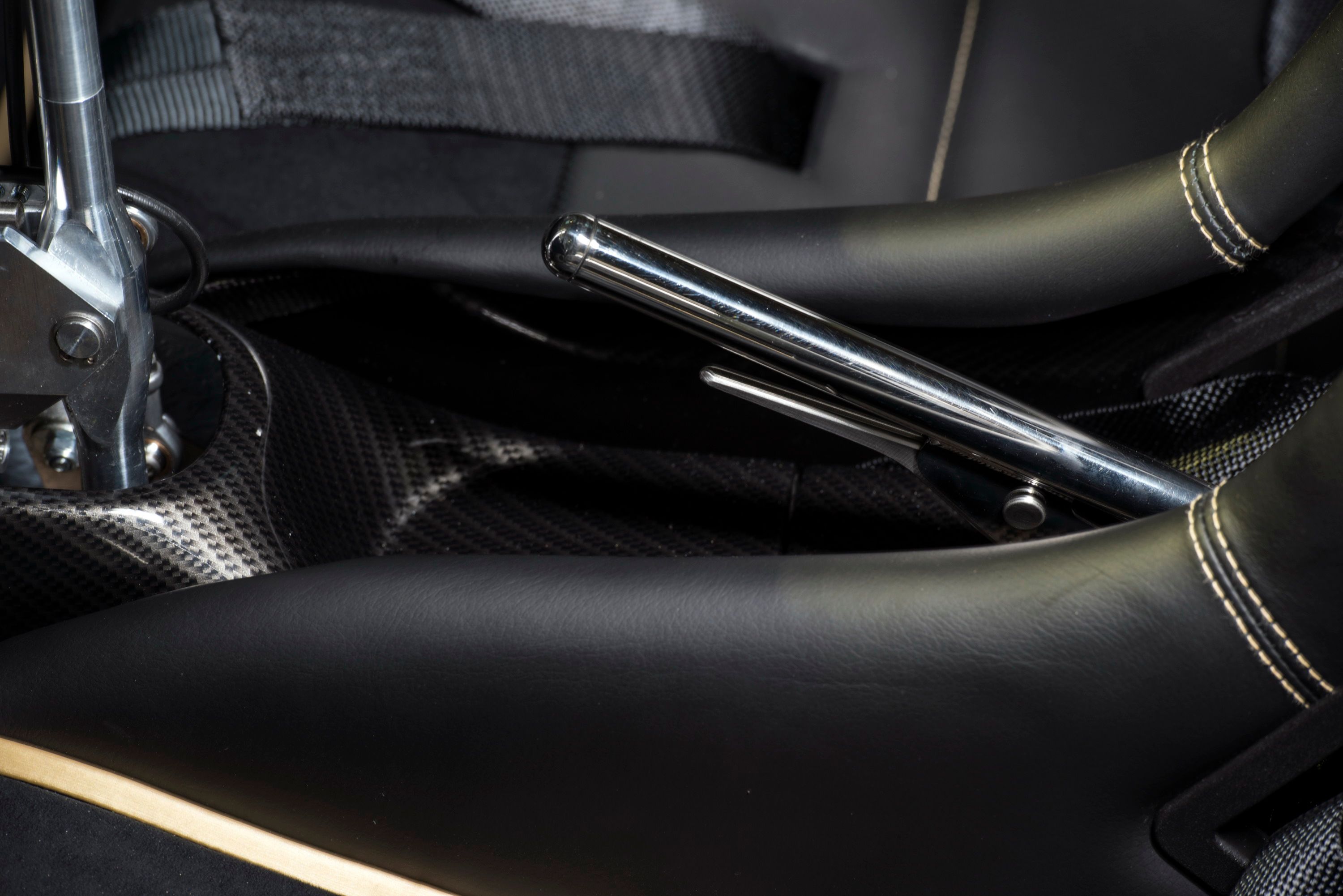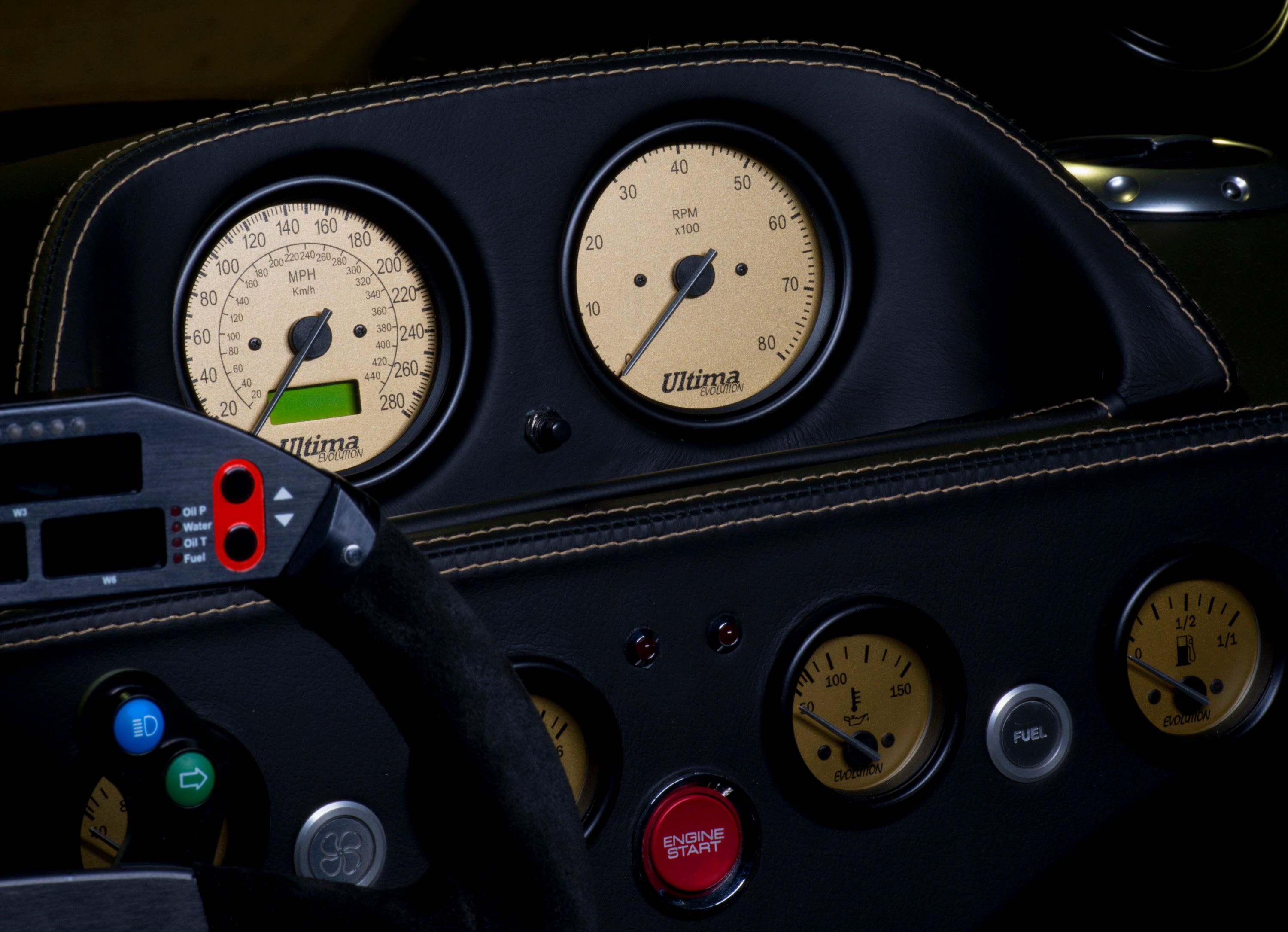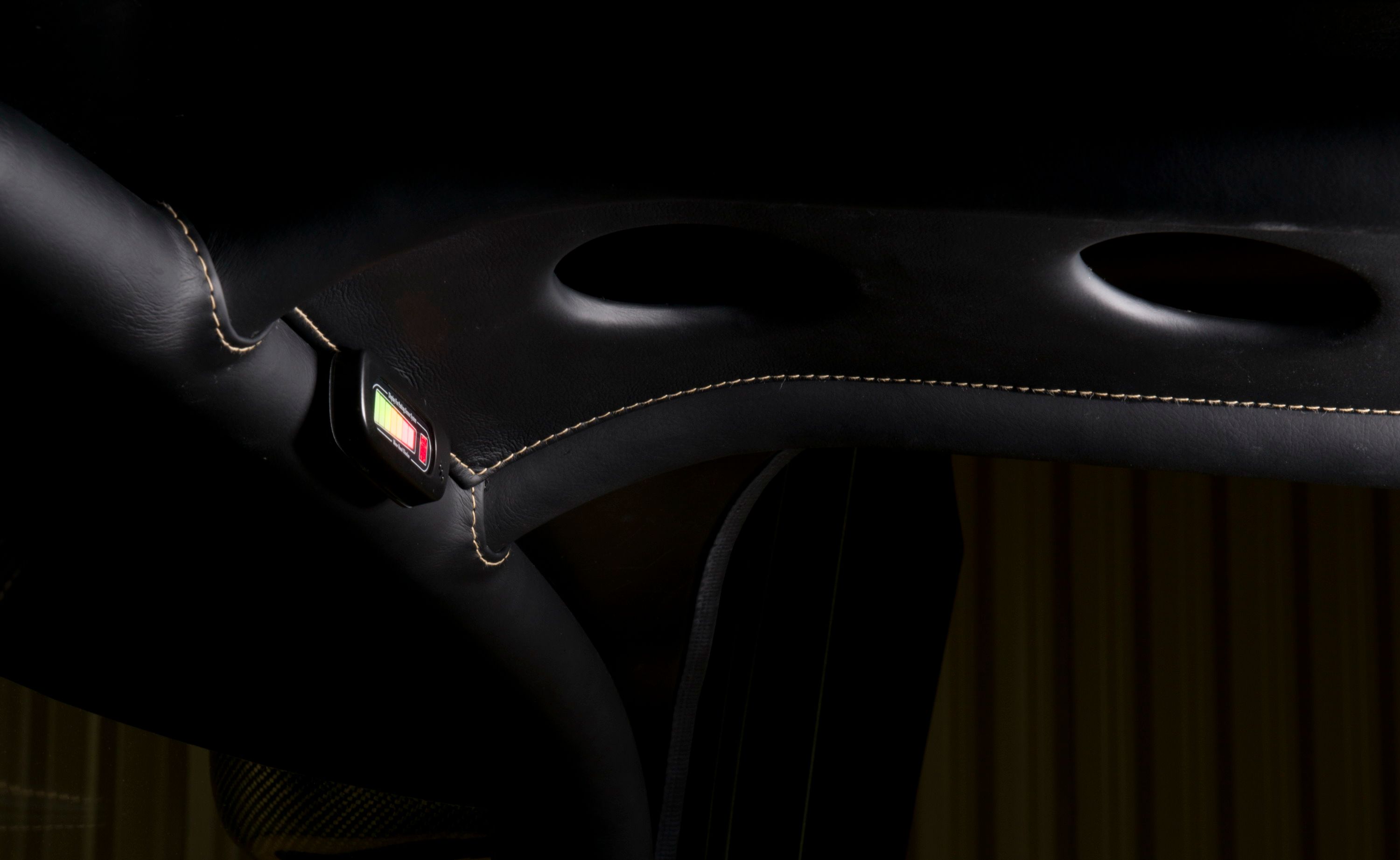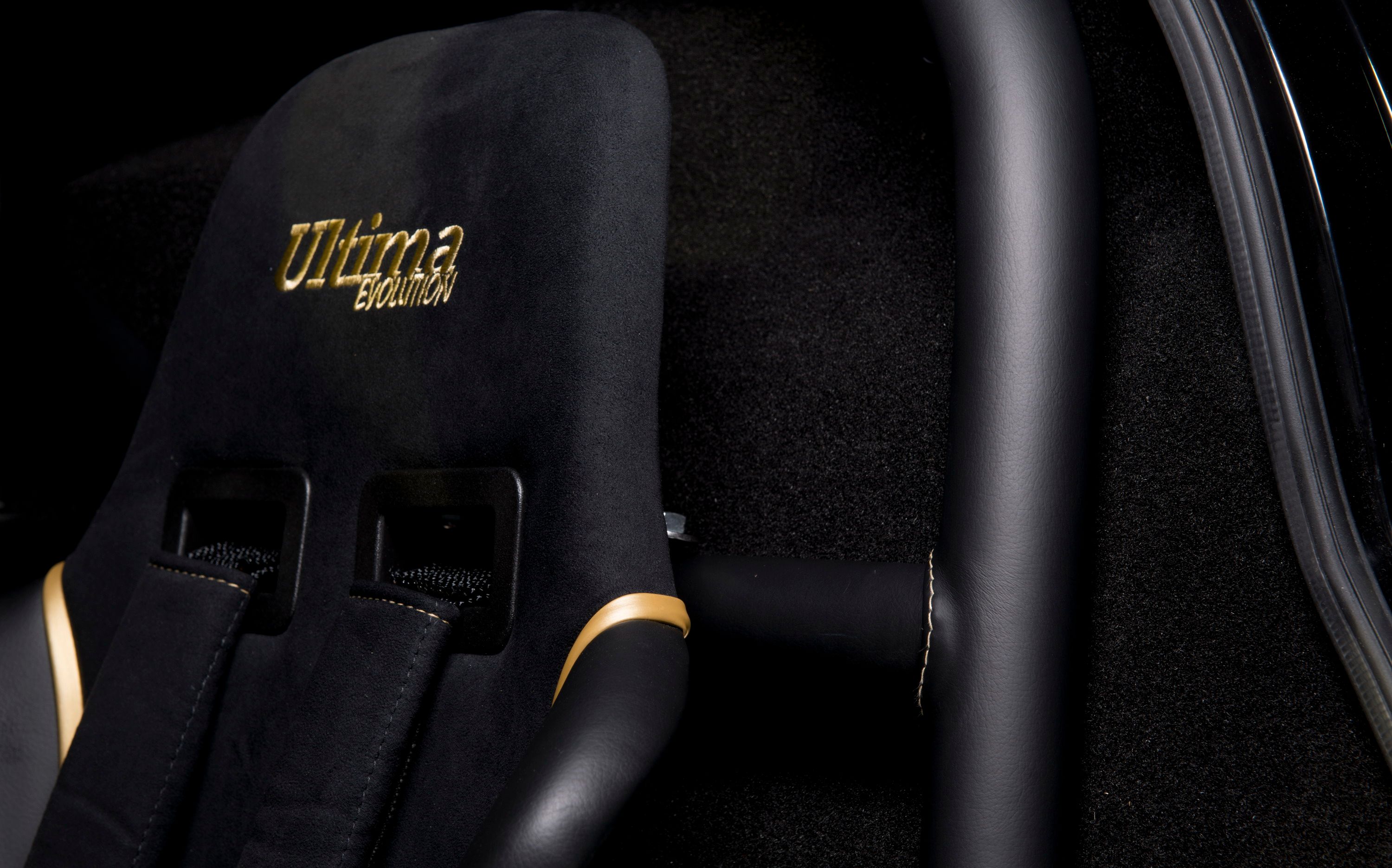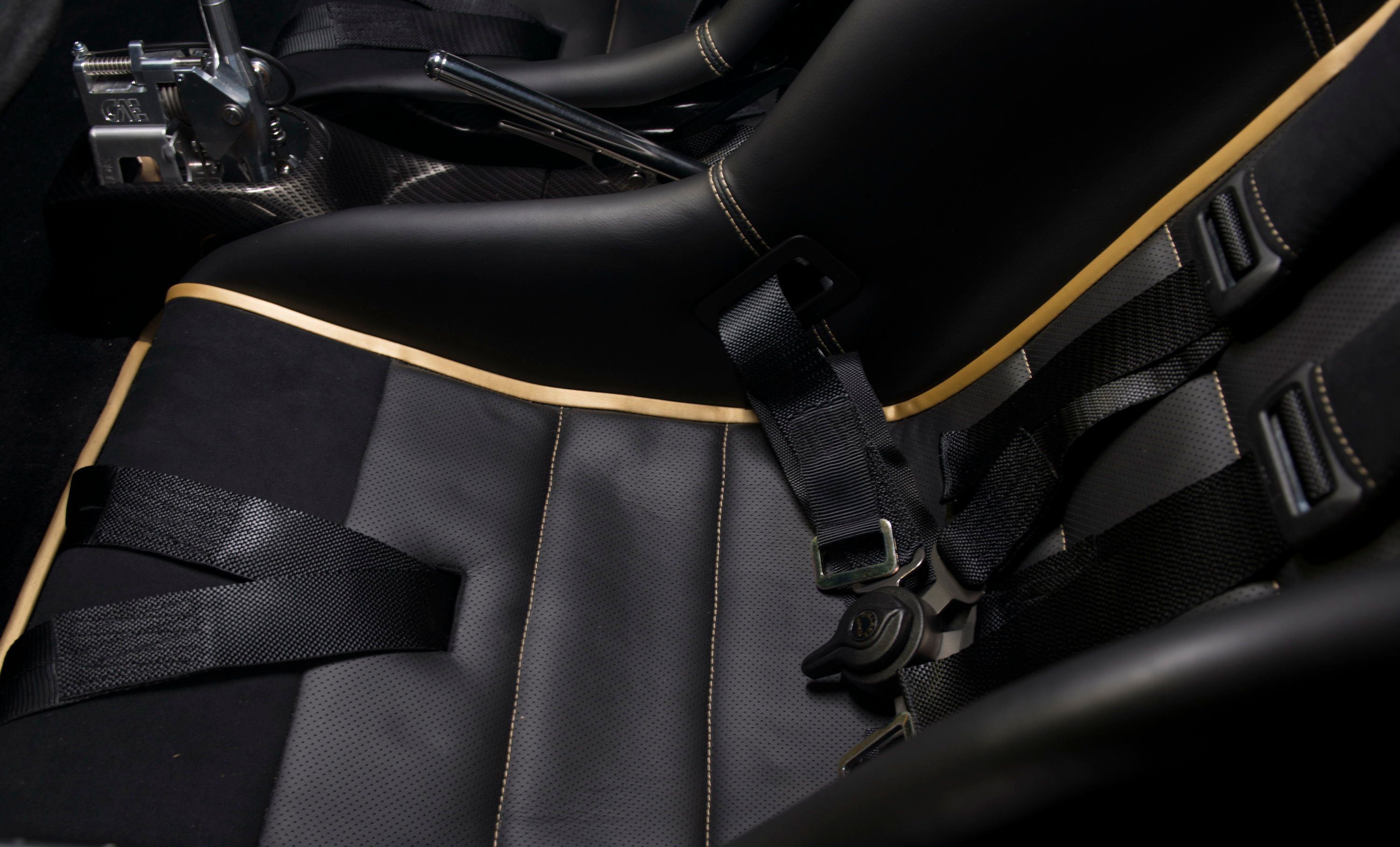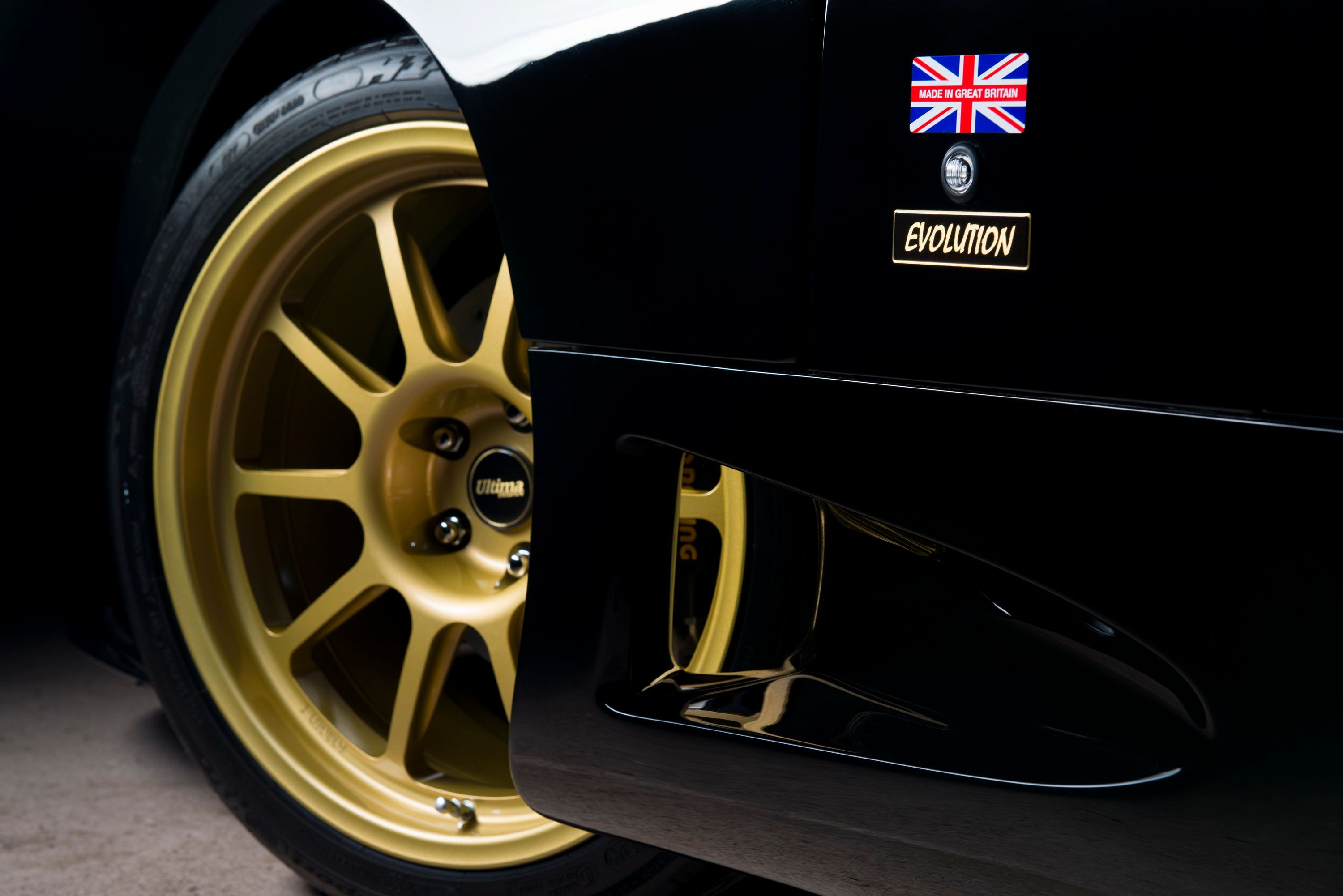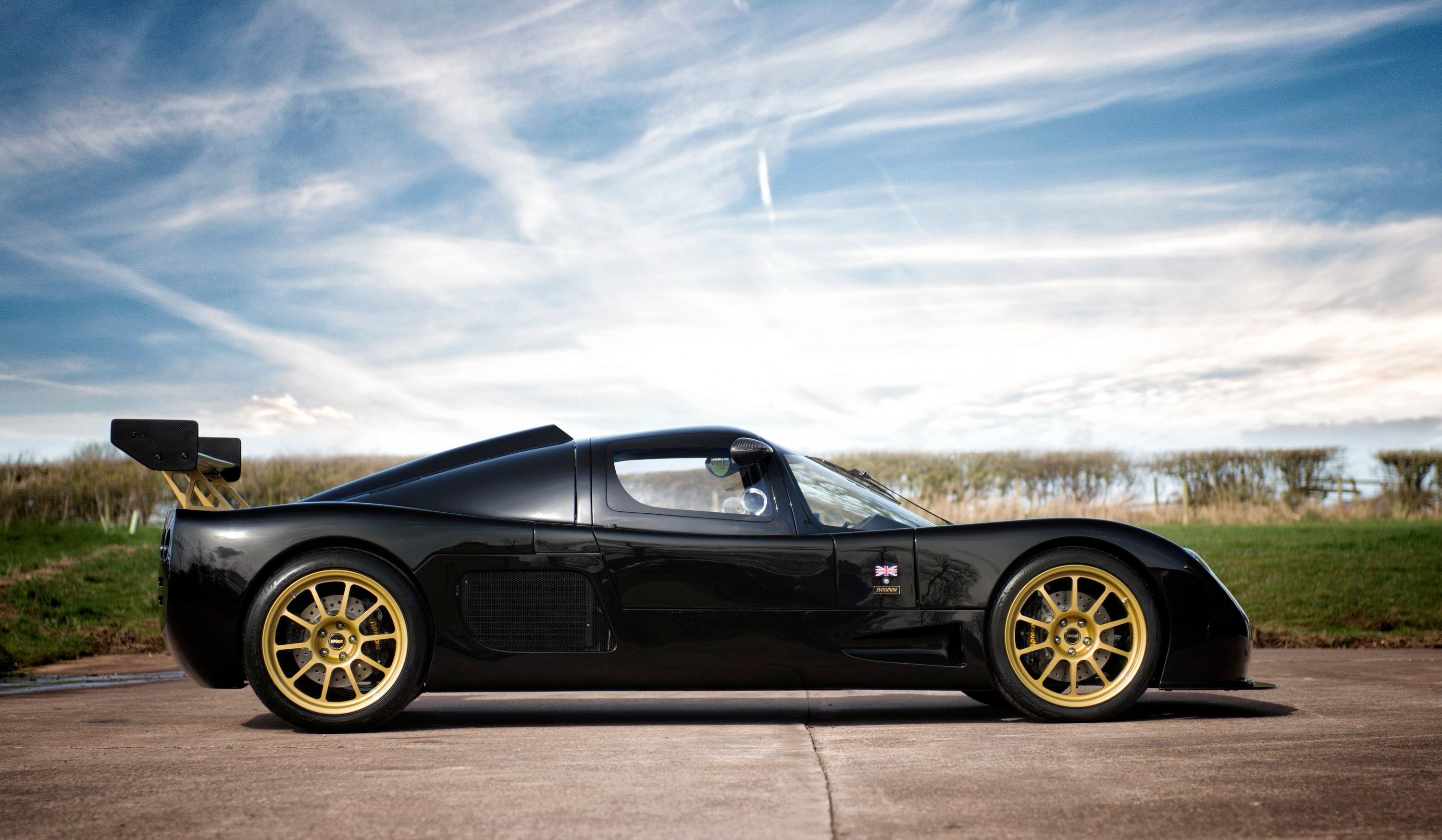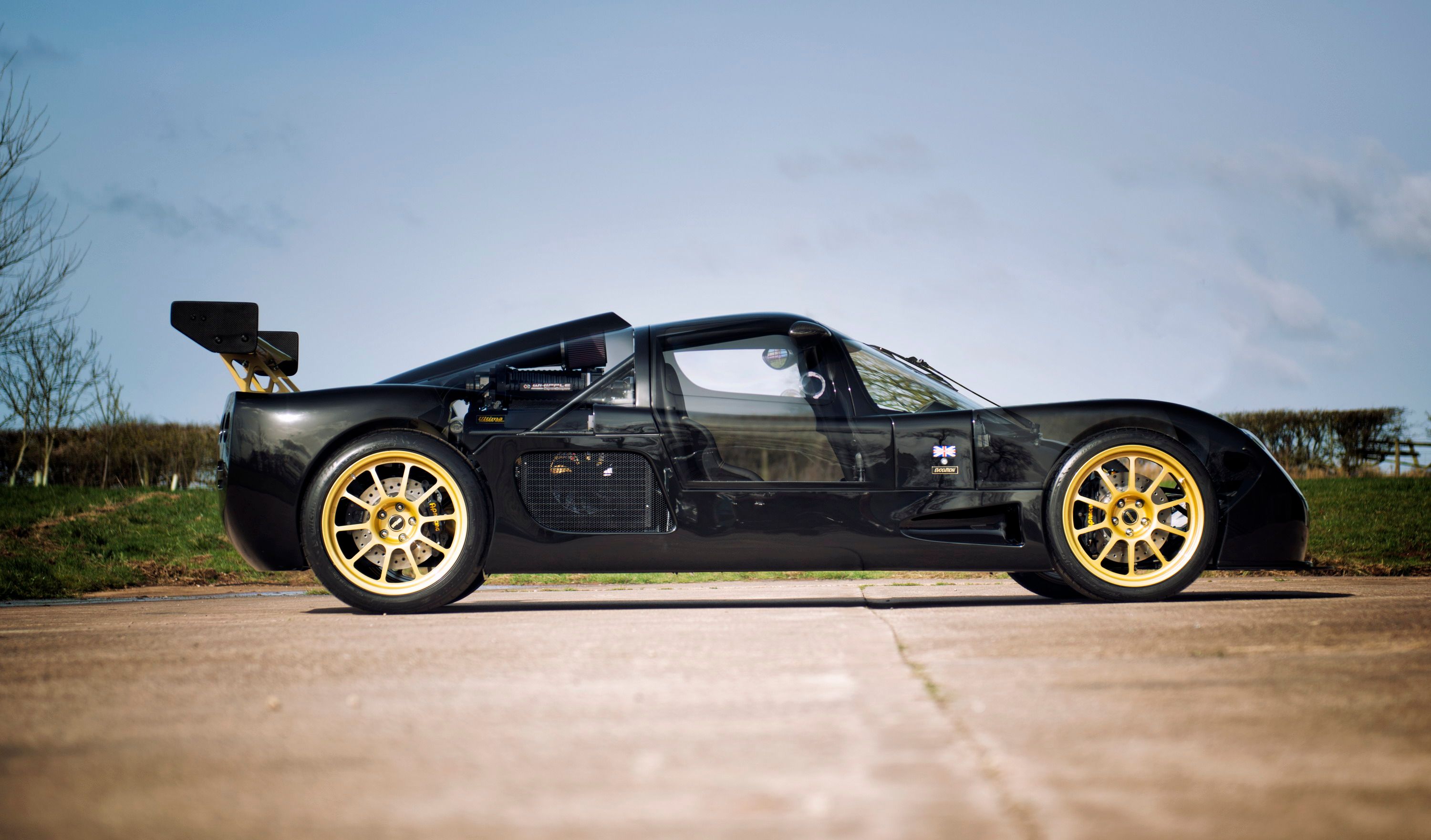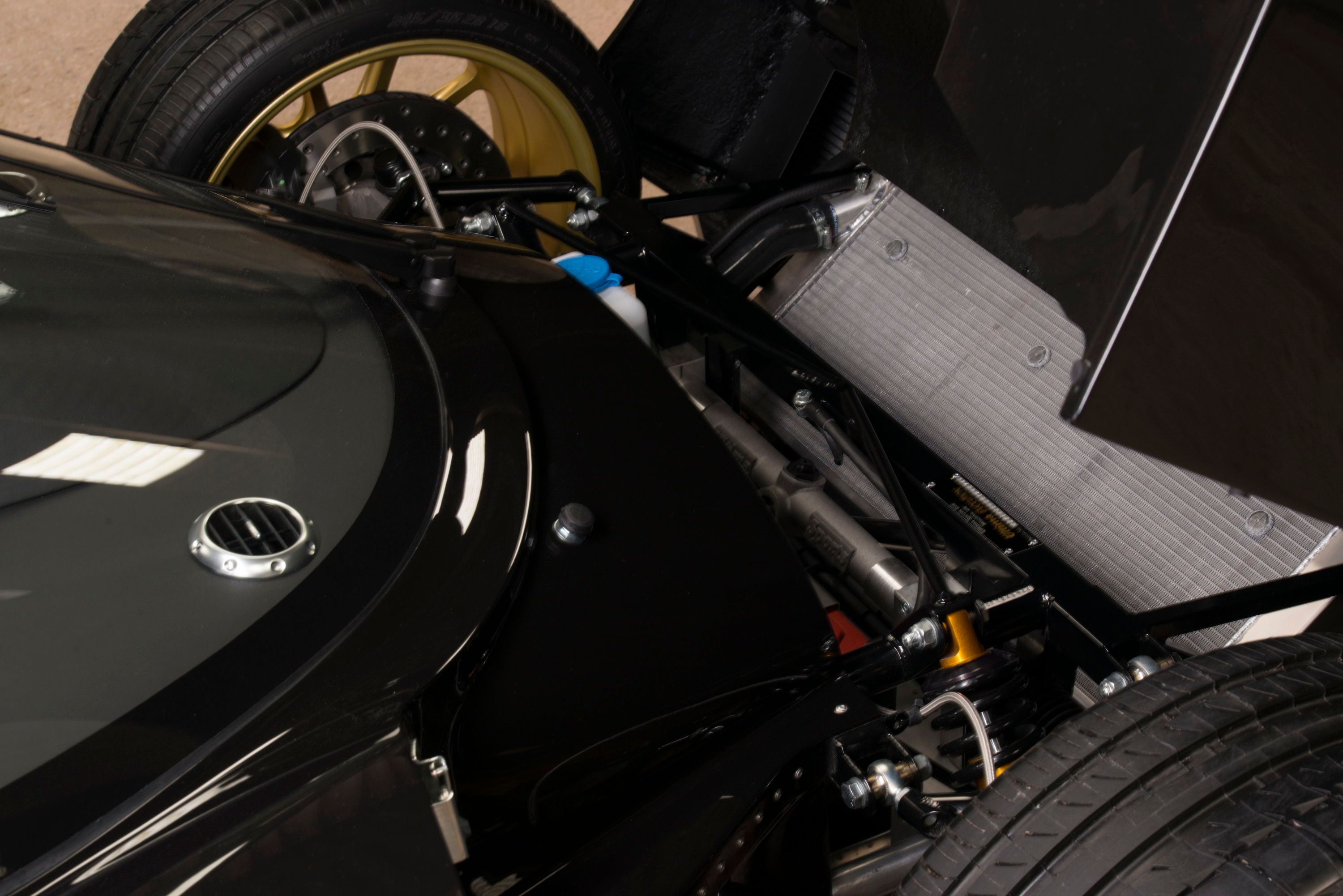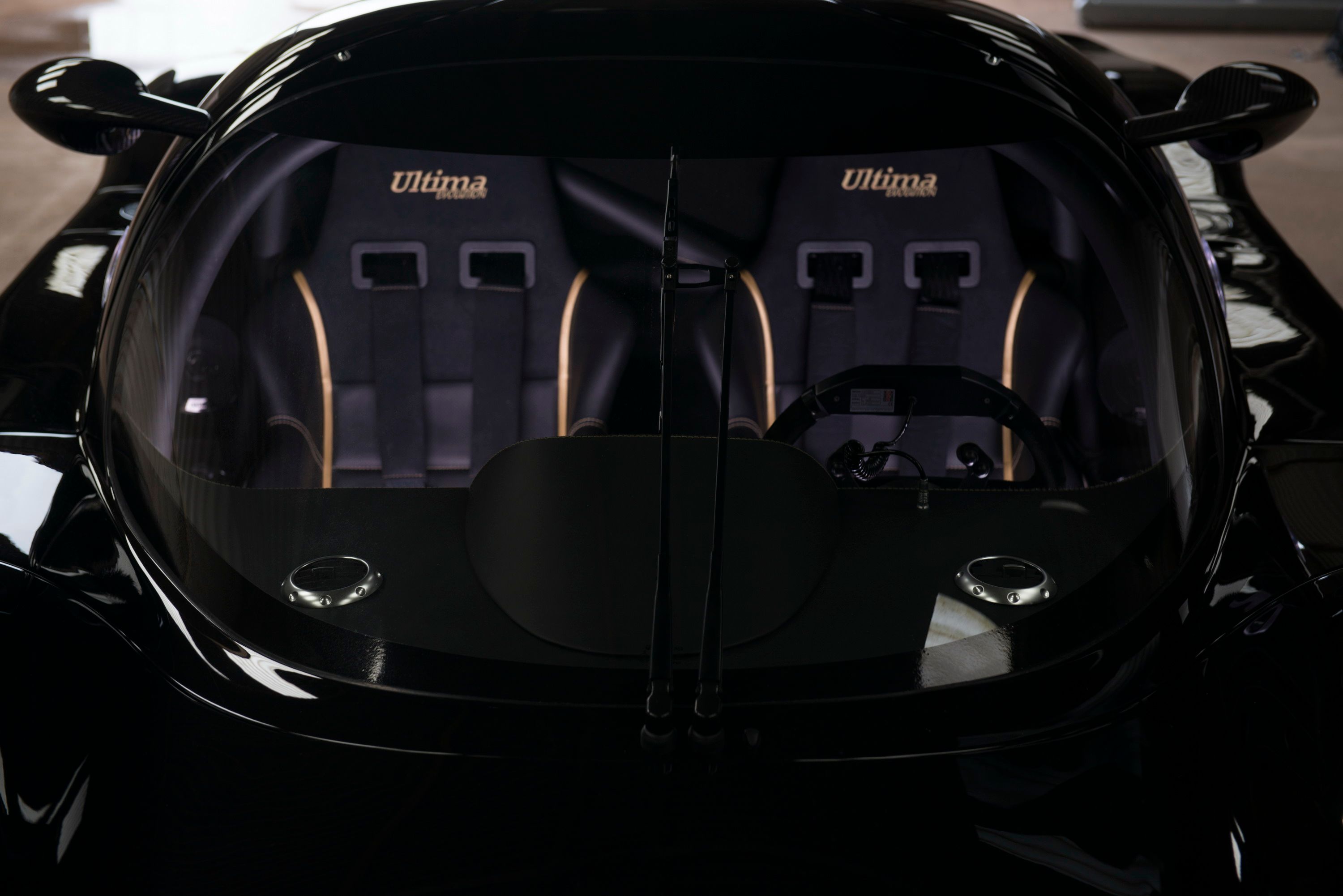It's been 15 years since British manufacturer Ultima->ke3777 introduced the GTR->ke3233 supercar and its Can-Am convertible sibling, and the lightweight vehicle known for shattering various speed records has just received its first comprehensive update. Meet the Evolution, Ultima's latest development of the GTR, a supercar->ke177 that claims to be the quickest production vehicle in the world, thanks to its lightness and supercharged V-8 rated at more than 1,000 horsepower.
For the uninitiated, the GTR was launched as a mid-engined, rear-wheel-drive car sporting an exterior design inspired by the Group C race cars->ke148 that dominated the tracks throughout the 1980s and the early 1990s. The GTR employed a low, sleek body with a canopy-like cockpit, a no-nonsense, race-spec interior, and a small-block Chevy->ke199 V-8 engine in various states of tune.
The Evolution not only follows the same recipe, but it also features the same design. However, an array of updates inside and out make it lighter than its predecessor, as well as better suited to compete against modern supercars, which aren't just fast, but luxurious as well.
Updated 09/10/2015: Ultima Sports LTD dropped a first video for its latest supercar, the new Evolution. Enjoy!
Continue reading to learn more about the 2015 Ultima Evolution.
2015 Ultima Evolution
- Make: Array
- Model: 2015 Ultima Evolution
- Engine/Motor: V8
- Horsepower: 1020
Exterior
The familiar design of the Ultima hasn't changed much with the Evolution model. The supercar retains the Le Mans Group C-inspired body shape (think Mazda 787B, Porsche 956/962, and Jaguar XJR-12) of the previous GTR and Can-Am models, but not without employing revised body features and lighter components. Although the overall design is 15 years old, I'm happy that Ultima decided to stick with it. This Group C configuration is not only a timeless design, but it also places the Evolution in an exclusive market appealing to Le Mans and 1980s racing enthusiasts. It's quite gutsy too, and it proves Ultima isn't chasing profits, but to deliver the ultimate race car for the road. And I like that!
A closer inspection of the body reveals the extensive modifications that turn the previous GTR model into the Evolution. Up front, there's a carbon-fiber splitter, LED headlamps with anodized aluminum bezels and carbon-fiber clusters, and LED daytime front running lights. The canopy-like cockpit also received a revised windscreen. Around back, there's a mildly altered carbon-fiber wing and new taillight clusters. On the sides, the Evolution showcases lightweight forged alloy wheels, carbon-fiber mirrors with revised positions for improved rear visibility, and new side intakes for greater airflow and improved cooling. New Ultima logo badges have been added on both the body and the wheels.
Exterior Dimensions
|
Length |
4,000 MM (157.48 Inches) |
|
Width |
1,850 MM (72.83 Inches) |
|
Height |
1,070 MM (42.12 Inches) |
|
Wheelbase |
2,560 MM (100.78 Inches) |
|
Ground Clearance |
120 MM (adjustable) (4.72 Inches) |
|
Weight |
950 KG (2,094 LBS) |
Interior
Even though Ultima claims "there is virtually no part of the Evolution that is in the same specification as when the GTR and Can-Am were first launched," the cockpit of the Evolution retains the basic layout of its predecessor. There's a no-nonsense dashboard with analog gauges and an array of buttons and switches left of the steering wheel. New bits include instrument faces that are now color-coded to the wheels, revised air conditioning vents, new warning lights, and a redesigned engine start button. The multifunction steering wheel is also new and comes with wireless integrated button controls instead of rocker switches. A flat-bottom steering wheel wrapped in Alcantara is offered as an option.
The upholstery for the racing seats now includes leather, Alcantara inserts, color-coded stitching, and Ultima Evolution logos with a color-coded piping option. The rollcage is also trimmed in leather, while the floor carpet can be optioned with color-coded piping as well. The seatbelts have been redesigned to meet the latest safety standards. Other updates include a machined alloy billet gear shifter, a carbon-fiber-style center console, a stainless steel handbrake lever, and billet interior door handles.
As for convenience features, Ultima equipped the Evolution with rear parking sensors, rear view reversing camera, a Satnav system, iPod and Bluetooth connectivity, and an Alpine car stereo system. Needless to say, Ultima focused on bringing its supercar into the 21st century in terms of creature comforts. Of course, hardcore gearheads can opt to have these features removed should they want the Evolution as a track car only.
Drivetrain
This is where the Ultima Evolution becomes a mind-boggling machine, especially in its supercharged trim. The range-topping model features a supercharged, Chevy-sourced, 6.8-liter V-8 that cranks out a whopping 1,020 horsepower. Granted, that's less than supercars wearing Bugatti and Koenigsegg badges are capable of, but the Evolution's performance figures will quickly make you forget about the Veyron and the One:1. That's because the top-of-the-league Ultima needs only 2.3 seconds to hit 60 mph from a standing start, which makes it the quickest production car in history. The manufacturer also claims world records for 0 to 100 mph (4.9 seconds), 30 to 70 mph (1.5 seconds), and 0 to 150 mph (8.9 seconds). Top speed is estimated at more than 240 mph, a tad slower than the Veyron's 254-mph Guinness World Record figure.
The main reason for these tremendous specs is the 2,094-pound curb weight, which makes it half the weight of the Veyron and lighter than most sports cars you can buy from established manufacturers.
The second engine that can be had with the Evolution is a 7.0-liter LS7 V-8. This mill pumps out 700 horsepower for a 0-to-60 mph time of 2.6 seconds (as quick as the Veyron) and a top speed of at least 200 mph. Lastly, a 6.2-liter LS3 V-8 -- used in the previous-generation Corvette, the fifth-gen Camaro SS and the Chevy SS -- produces 480 horses, a 0-to-60 mph sprint of 3.1 seconds and a top speed of 180 mph. Granted, it's less impressive than its supercharged sibling, but quicker than 95 percent of today's sports cars and a few supercars. Again, it's the light weight of the Ultima Evolution that make a 480-horsepower machine quicker than a 520-horsepower Porsche 911 Turbo.
Regardless of the engine and the output, the transmission is a Porsche-built six speed manual transaxle with machined billet quick shifter cable change system. That's race-bred stuff right there.
Drivetrain Specifications
|
Model |
Supercharged V-8 Ultima Evolution |
LS7 V-8 Ultima Evolution |
LS3 V-8 Ultima Evolution |
|
Engine |
6,800 cc V-8 |
7000cc LS7 V-8 |
6200cc LS3 V-8 |
|
Output |
1,020 HP |
700 HP |
480 HP |
|
0-60mph |
2.3 secs (World Record) |
2.6 secs (World Record) |
3.1 secs |
|
0-100mph |
4.9 secs (World Record) |
5.3 secs (World Record) |
6.4 secs |
|
30-70mph |
1.5 secs (World Record) |
1.8 secs (World Record) |
2.4 secs |
|
0-150mph |
8.9 secs (World Record) |
10.4 secs (World Record) |
13.2 secs |
|
0-100-0 mph |
8.8 secs (World Record) |
9.4 secs (World Record) |
10.5 secs |
|
Standing quarter mile |
9.2 secs @ 156mph |
9.9 secs @ 143mph |
11.4 secs @ 129mph |
|
Top speed |
240+ mph (gearing limited) |
200+ mph (gearing limited) |
180+ mph (gearing limited) |
Prices
Ultima says pricing of the Evolution remains unchanged from the GTR, meaning customers can buy and built a kit car "for the same ballpark price as a mundane new BMW 335i, which starts from £38,260, or about $57,200 as of 04/08/2015, in the UK. Pre-built cars start from £65,995 (around $98,690) for the base model and from £95,995 (about $143,560) for the wild, 1,020-horsepower, supercharged range-topper.
Unfortunately, the reason why I can't provide U.S. pricing for the Evolution is that the supercar isn't coming to North America anytime soon. In its current specification, it wouldn't be road legal anyway. What a shame, huh?
Competition
Caparo T1 Evolution
Because of its design and for sticking so close to the actual racers of the 1980s, the Ultima Evolution is unique vehicle, and doesn't have actual competitors. However, there is a certain contraption that brings together lightness, mind-boggling power and ludicrous speeds in a similar way. It also hails from Britain and it goes by the name Caparo T1. Introduced in 2006 as a super-light, street-legal race car, the T1 became known as the closest thing to an F1 car one can buy and use on public roads.
Developed by Ben Scott-Geddes and Graham Halstead, two engineers involved in the creation of the McLaren F1 supercar, the T1 tips the scales at only 1,040 pounds, and has a power-to-weight ratio of 1,223 horsepower per tonne. Sprints from 0 to 60 mph came in as low as 2.5 seconds. For 2015, Caparo is readying the T1 Evolution, and although the hypercar is only a sketch as of April 2015, its design appears to borrow cues from both Le Mans prototypes and Formula One cars. Power is said to come from a V-8 engine rated at 700 horses. Granted, it won't be as quick as the supercharged Ultima Evolution, but fast enough to give it a good run for its money.
Read more about the T1 Evolution here.
Conclusion
With its Group C-inspired design and limited availability, it's quite obvious the Ultima Evolution is built for a very narrow audience. But that's exactly what makes it a proper race car for the road, and at the same time, gives it an exotic appearance. The Evolution is not for everybody, and that's because it doesn't come with the same brand cachet as a Ferrari or a Bugatti. You can buy an Ultima just to show off, but unlike most other supercars, this is a vehicle that needs to be raced. Its natural environment is the race track, but trailer rides are out of the question. What I love about the Evolution is that it is the one and only supercar that would make its driver feel like he's racing the outrageous prototypes of the 1980s. The fact that you can buy it in a box and build it yourself makes it that much better.

